Must-Have Digital Marketing Tools in 2019
Apparently, digital marketing is all over the place. Website owners insist on the importance of having a solid marketing strategy for their website or SEO and PPC (pay-per-click) campaigns.
In 2019 the competition between companies based on their marketing strategy is not only high - it’s rather intense. Such “old” marketing instruments as sending emails to leads are no longer enough to start getting decent sales.
The job of today’s digital marketers includes a lot of tasks and responsibilities - from old-but-gold email marketing to web analytics, SMM, SEO, ads placement, and much more.
Such a long list of responsibilities can terrify everyone not knowing about the existence of super helpful marketing instruments free at your disposal. All of them are meant to ease the marketers’ workload and increase their productivity in times.
More to say, the necessity to keep up with current trends forces every marketing specialist to keep searching for more convenient and advanced tools for their arsenal.
Today, I offer you to compare your own list of actively used digital marketing tools with mine. I’ve got 55 must-have digital marketing tools that I believe every marketer needs to have at one’s disposal in 2019.
I also sorted the tools by relevant categories for easier browsing:
Let’s see which of these tools you can no longer imagine your work without and which ones will be your new discovery.

SMM - Social Media Marketing
What’s the actual power of social media? It opens a door to large groups of users that you would hardly reach in any other way. Today’s social media platforms have progressed a lot in terms of digital marketing. Reaching a target audience with certain interests, hobbies or age by making a targeted ad and monitoring its success is a matter of several minutes.
It’s clear that SMM continues to rule the digital world and becomes even more advanced with each year. My advice for every SMM specialist is to start using at least several of these 10 social media marketing tools:
Hootsuite
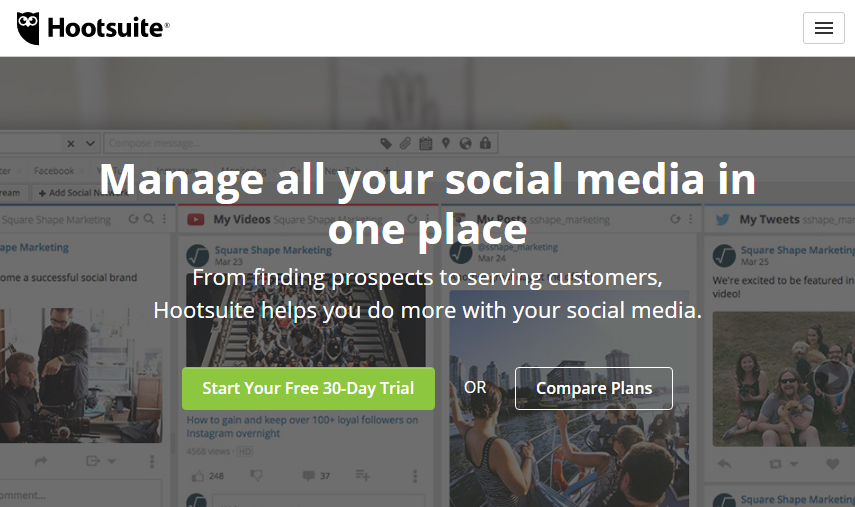
Hootsuite - a perfect instrument for scheduling posts on various social media accounts and tracking them all in a single dashboard. You will be able to set up so-called “streams” for scheduled messages, posts, mentions, and many more. Last but not least: you can assign a comment/message to a team member for them to reply later.
Buffer
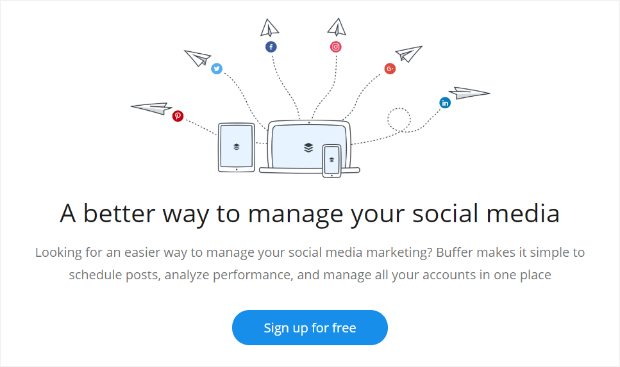
Buffer - with the same concept as Hootsuite, this social media management tool allows you to automate manage posts for all accounts in one place. By using the platform’s analytics, you can track the performance of each post and thereby make conclusions on whether a certain type of content works well or not. Buffer is used by over 5 million! users worldwide and offers 3 plans (free, Pro, Business) with a different set of available features.
Meltwater

Meltwater - this tool will help you explore and track your social media activity as well as best-performance keywords and the latest trends in real time. Among the useful features are 1) the ability to monitor your brand in real time; 2) all search results collected in one place; 3) monitoring your brand mentions; 4) analyzing the effectiveness of your advertising campaigns; 5) creating drafts of your publications for days, weeks or even months; and 6) statistics.
Google Alerts
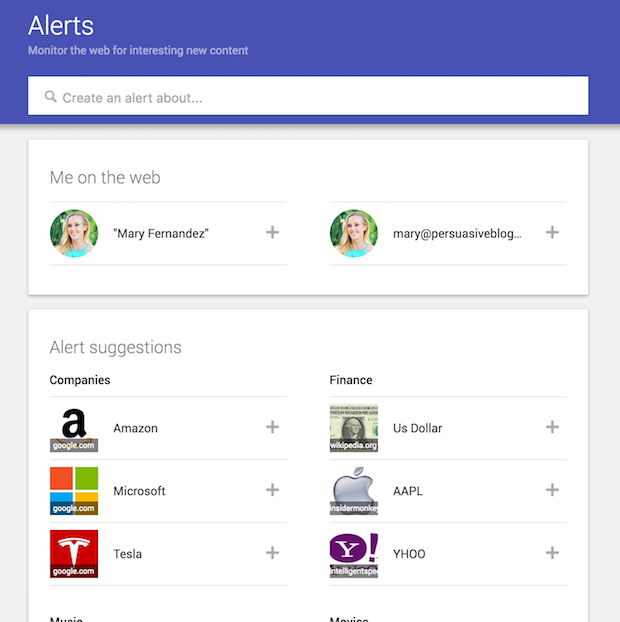
Google Alerts - a handy tool to keep track of the latest news and references about your brand, competitors, and opinion leaders. Quite easy to set up, this is considered a nice option for beginners. Every time Google finds mentions or keywords related to your brand in a blog, forum, or a news site, it sends you a notification.
Simply Measured
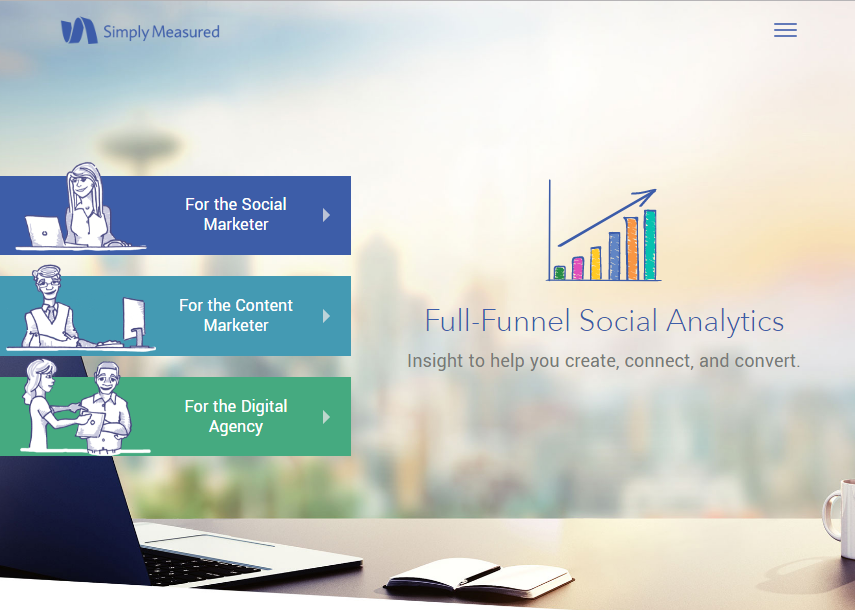
Simply Measured - this social analytics system lets you discover the interests of your audience, and customize your interaction with visitors using data collection, analysis, tracking, and measurement.
SumAll
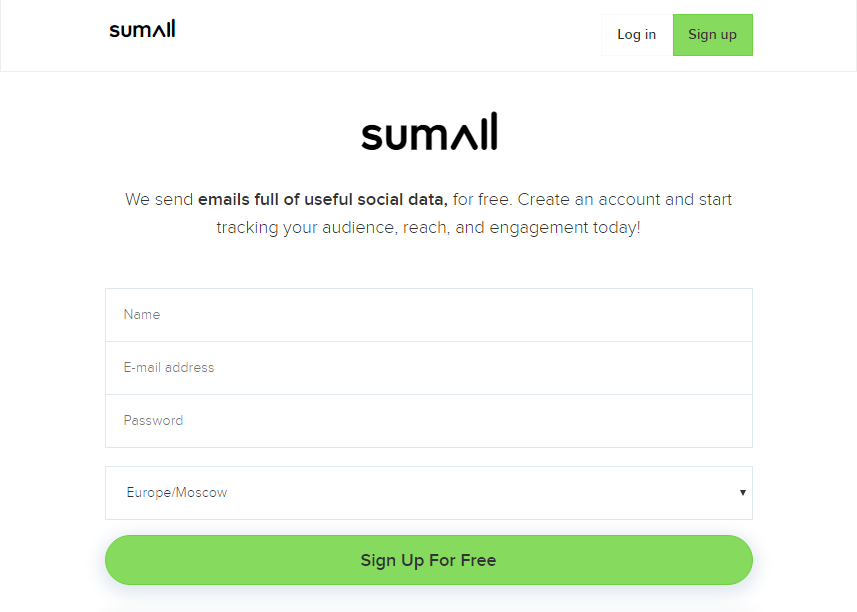
SumAll - sign up for this free tool and you’ll start getting daily newsletters with an overview of your account statistics and a comparison with the previous week’s stats. This way, you’ll be able to react quickly to the issues like low activity, an increased number of negative comments, etc.
Wyng
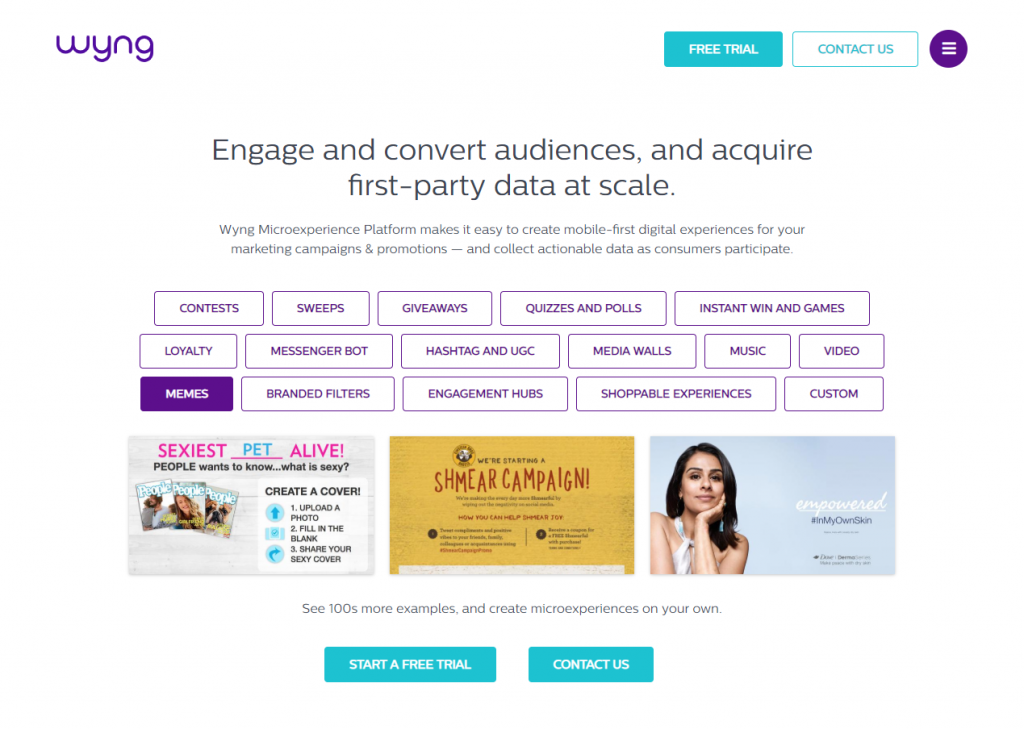
Wyng - a popular SMM instrument for powering digital hashtag campaigns and other promotions for companies and brands. The platform has a built-in analytics dashboard responsible for tracking the performance of all currently running campaigns.
Facebook Page Insights
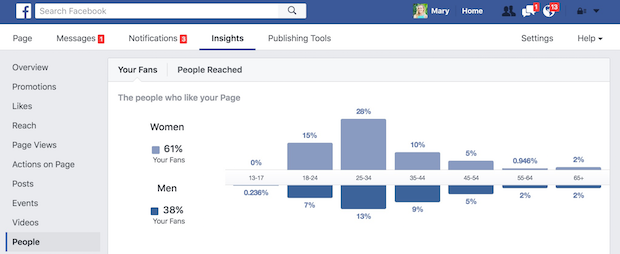
Facebook Page Insights - it’s the ultimate tool for leveraging your Facebook ads. By using FB Page Insights, you can analyze customers’ behavior and utilize these stats for more targeted ads, even outside of Facebook.
Promorepublic

Promorepublic - allows you to not only schedule posts but also create killer content for your social media accounts. The tool currently offers over six thousand handcrafted templates and over a hundred thousand images at your disposal!
Sales Navigator

Sales Navigator - use this instrument to view social media profiles, in particular, LinkedIn, and track your activity by getting Gmail notifications. The other main task of Sales Navigator is to help businesses establish their connection with potential customers.
SEO - Search Engine Optimization
One of the main reasons why brands get known and respectively increase their sales is their well-thought-out SEO strategy. Keeping your website highly-ranked by search engines will help you gain a solid reputation from potential customers. Now, let me introduce you to the 10 coolest SEO tools that you should definitely add to your arsenal:
Google PageSpeed Insights

Google PageSpeed Insights - Google pays huge attention to how long it takes to download a single website page. The visitors’ behavioral factor depends a lot on this factor; if the load time exceeds 3 seconds, the user will most likely leave. Google PageSpeed Insights allow you to analyze the download speed of the separate website pages (both mobile and desktop versions). Besides, the service gives you suggestions on how to improve this indicator.
Keywordtool.io
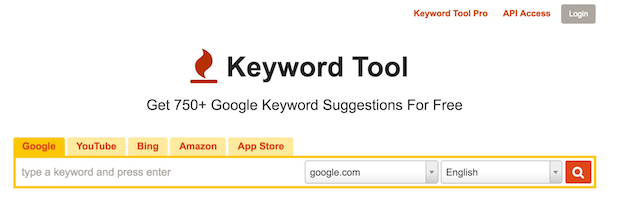
Keywordtool.io - Too lazy to come up with hundreds of relevant keywords for your next SEO campaign? Or you’re already aware there exists such services as Keywordtool.io allowing you to save time on keywords generation? Here you will find plenty of useful keywords to specify your niche and help you find target customers.
Ahref
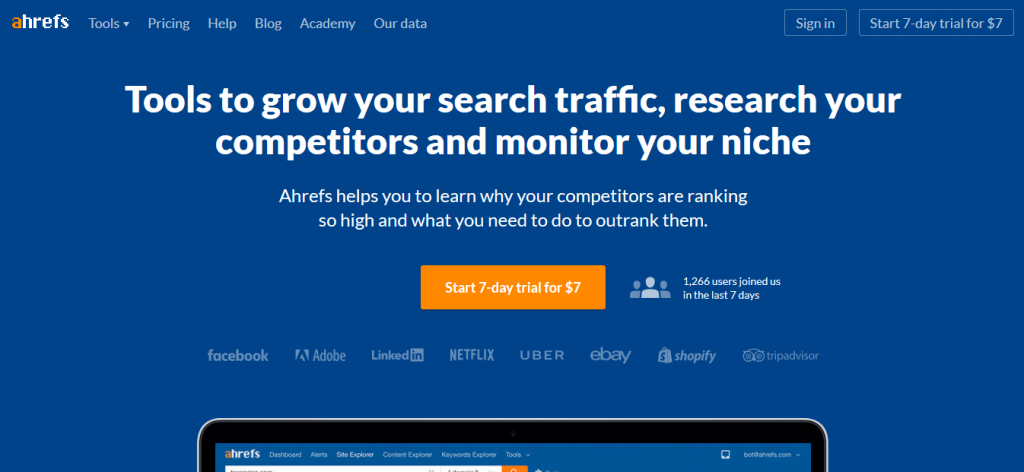
Ahref - Do you need to see how effective backlinks are? Then start working with Ahref free backlink checker. The database with more than 16 trillion links is updated at least once a day allowing you to monitor newly emerging backlinks. Aside from backlinks, you are allowed to check five of the top anchors and most linked-to pages on the target site. This is totally one of the few tools an SEO specialist should use on a daily basis.
Netpeak Spider
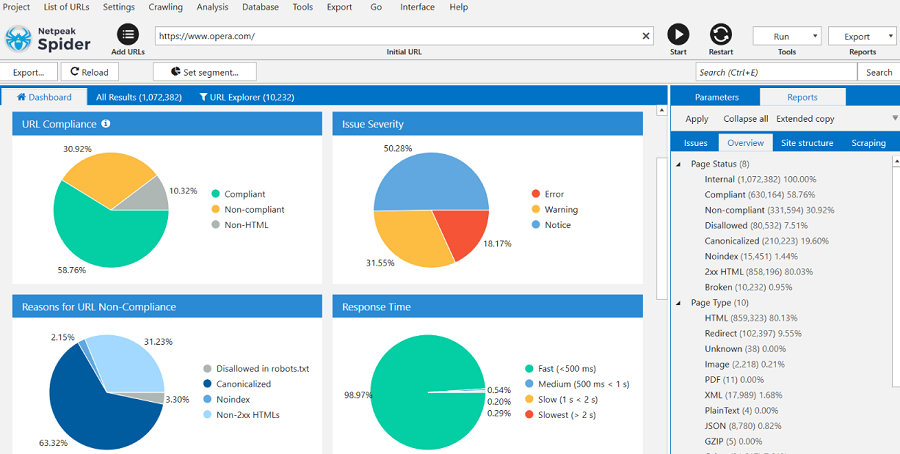
Netpeak Spider is a desktop tool for day-to-day SEO audit, quick search for issues, systematic analysis, and website scraping. It analyzes incoming and outgoing links, finds broken links and redirects, escapes duplicate content: Titles, Meta Descriptions, H1 Headers, and presents all the data in graphics and diagrams.
QuickSprout
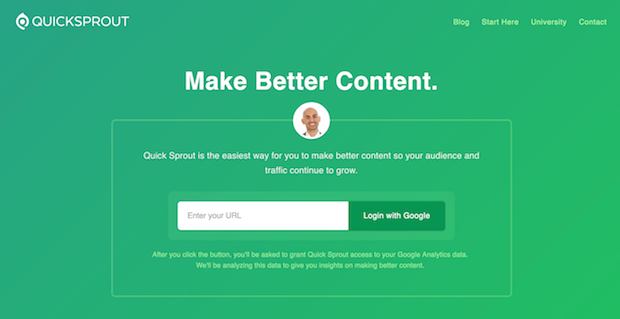
QuickSprout - a free online tool for webmasters to get a quick look at their website insights like SEO, page load options, and the impact of social media. One may also be useful for comparing your site to competitors and finding out why the latter have a better place and what you can do to catch them up.
Alexa
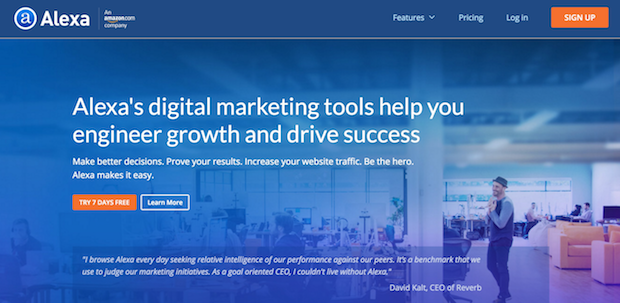
Alexa - although launched back in 1996, this analytical service can still boast of outstanding deep analytical insights. Alexa still remains one of the most useful instruments for website optimization and “stalking” competitors. The service is no longer free, but you can use a 7-day free trial.
SimilarWeb
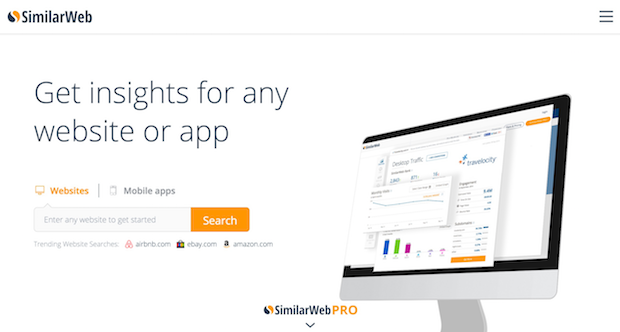
SimilarWeb - Marketing is all about competition and tracking competitors whether they’re doing better or worse. When it comes to SEO, SimilarWeb may come in handy - it lets you compare traffic between two different sites. So easy to get exposed these days, huh?
Siteliner
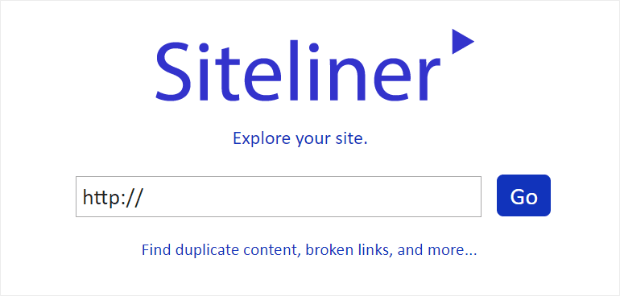
Siteliner - If your site is an oldie or it has a lot of content that you fear can be duplicated (repeated content is super bad for SEO), visit Sideliner. This tool will quickly browse through each webpage to find relevant keywords and share with you the immediate results.
Browseo
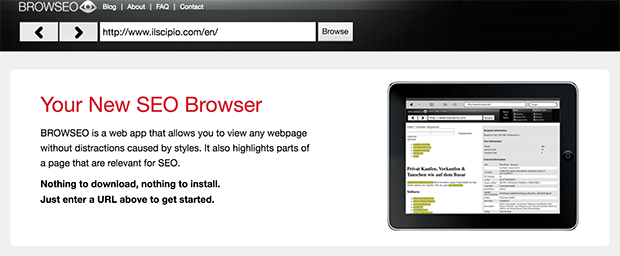
Browseo - a special, effective and, most importantly, free web service allowing you to view websites without any distractions and emphasize on all the website parts that have to do with SEO. Also, the tool has many more features to conduct a deep SEO analysis.
Google Trends
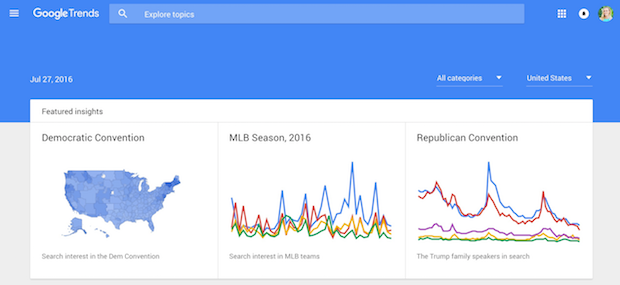
Google Trends - Before using potential keyword phrases, check them in Google Trends. It is possible that some may not be as relevant as some other keywords with much greater potential. As you enter a query, you’ll access graphics that should help you predict whether those key phrases will be demanded in the near future. You can also check the relevance of other keywords in the Google Keyword Planner.
DeepCrawl

DeepCrawl - the tool for super deep website analysis. The service literally inspects each webpage to provide you with tons of useful data, from the number of H1 tags on each page to the number of external/internal or social media links and so on. For a better perception, all the information is shown in graphics and diagrams.
Web Analytics & Report
Nobody can doubt: analytics is the core and the foundation of everything. Not even the smallest $20 advertising campaign can be launched successfully without proper web analytics. So let's talk about the most efficient analytics tools (both free and paid) for all kinds of website traffic.
Google Analytics
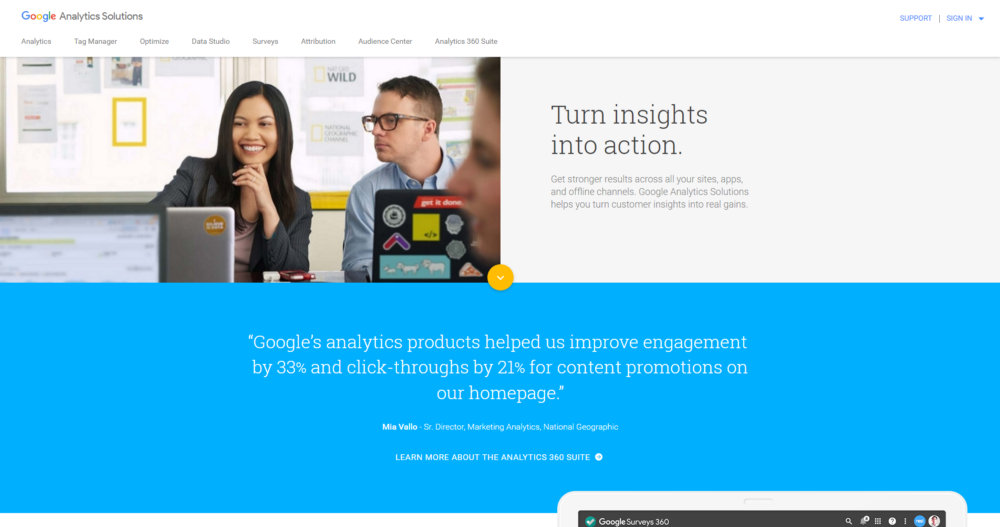
Google Analytics - no need to describe how great Google Analytics is. According to Marketing Land, in 2015 this service had been used by 30–50 million websites! Google Analytics has excellent multichannel sequence reports that show how many times one user visited a site before leaving a request and which resources they come from.
Facebook Analytics

Facebook Analytics - Facebook is about to turn into a single marketing platform, so go ahead and learn how to use Facebook Analytics right now. Many experts consider it one of the most powerful analytic apps. This is where you get all the information about users: demographics, interests, and any other segmentation.
Google Tag Manager
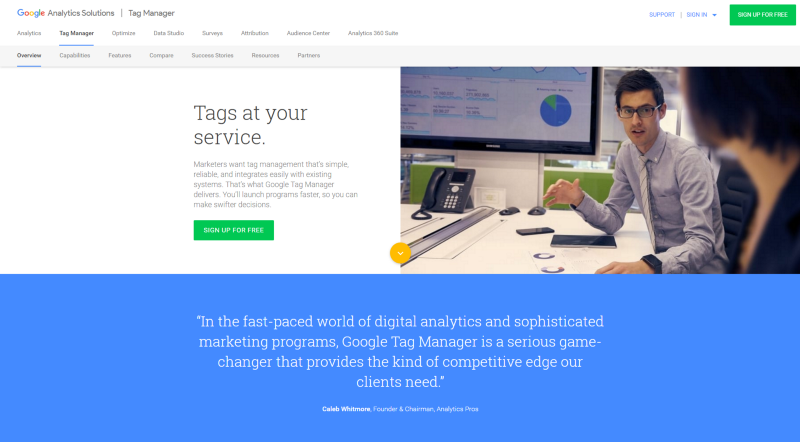
Google Tag Manager - a free Google tool allowing you to embed and manage analytics and remarketing tags. Also, it helps you solve other tasks related to making changes in the website code.
Crazy Egg
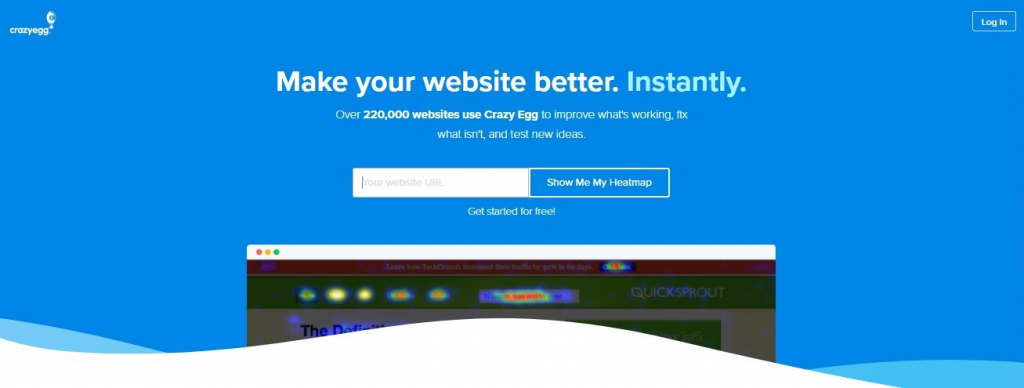
Crazy Egg - another great easy-to-use tool for comprehensive analytics. Here you can easily generate heatmaps and scroll maps that will show you the exact number of users scrolling through your site and what they click on the most. Besides, Crazy Egg allows you to test different website versions.
Clicky
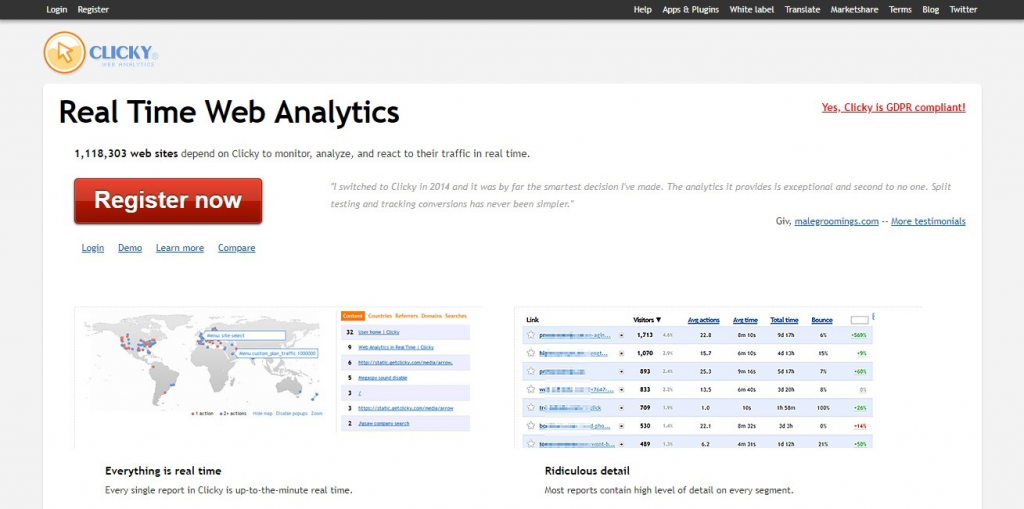
Clicky - often compared to Google Analytics, this platform helps you monitor online users, the number of visits, the number of actions, bounce rates, organic searches, etc. Nonetheless, Clicky has something that GA does not - its tracking feature works in real time and provides instant results. The service analyzes the audience by such indicators as the country, the number of browsed pages, and the traffic source. Also, there are tools for checking Google positions, monitoring the effectiveness of ad campaigns and heatmaps. To collect statistics, Clicky requires installing an HTML-code.
Kissmetrics

Kissmetrics - this tool can analyze statistical data on the same visitor who may come to your website from different devices. The service makes a record for each user and analyzes the resource he came from, the pages he browsed through, the products he was interested in, and the products he purchased.
Kissmetrics is particularly valuable for e-commerce store owners as well as marketers needing this kind of data to build an effective marketing strategy for better sales. Companies with a large customer base can use the audience filtering function by various indicators (by shopping list or traffic source) and generate emails to send unique offers to certain customers groups. Developers can use the tool for A/B testing.
Chartbeat
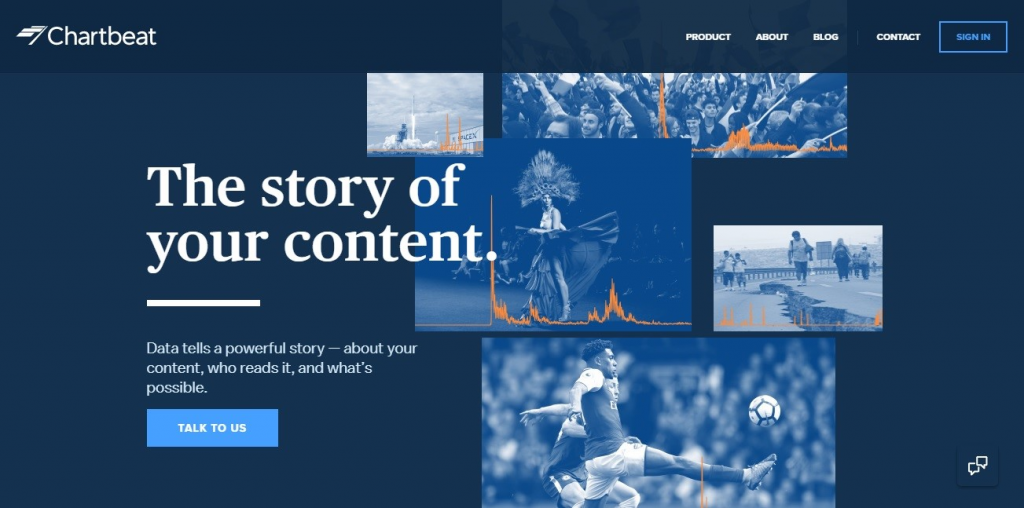
Chartbeat - specialized in advanced data analysis, Chartbeat monitors users’ interaction in real time either with the entire website, separate pages or even with page elements. The tool takes into account two major parameters: recirculation (returning to pages, transitions through the site, interaction with the page elements) and engaged time (the time users spend on your website, duration of the web session).
The key innovations offered by Chartbeat are a) editorial real-time analytics; b) focus on user engagement and engaged time; c) dealing with the social “information gap” issue, and d) the ability to track the effectiveness of shared content.
Hotjar
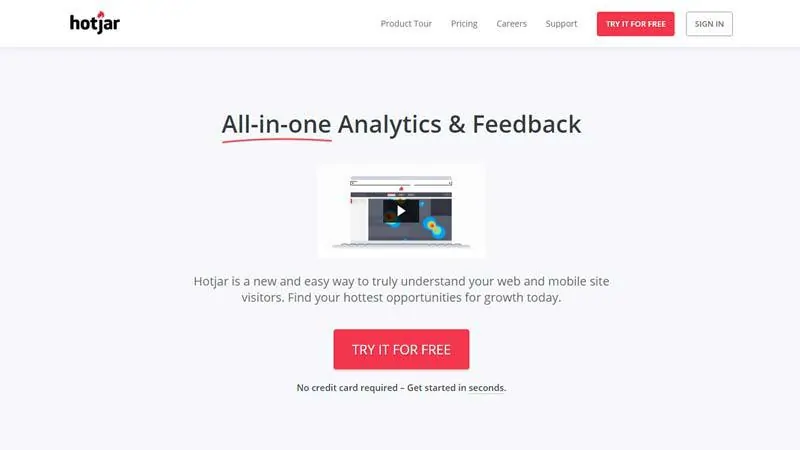
Hotjar - a great tool for visual representation of what is happening on the website at the exact time. The list of available features includes Heatmaps, Recordings, Funnels, and Forms. By using Hotjar, you can find out which stage you “lose” customers at during the sales funnel, or why they stop the purchasing procedure. You can also determine which pages poorly convert or do not convert visits to sales at all, and based on this data, make changes in the pages, forms, and applications. Hotjar has a free limited version, but its data may not be enough for a full comprehensive analysis. The minimal subscription price is €29($33)/month.
Content Marketing Done Right [Free Ebook]
By clicking the button you agree to the Privacy Policy and Terms and Conditions.
Matomo

Matomo - for those needing a Google Analytics alternative with the ability to store data on your server, I highly recommend using this instrument. Matomo is an open-source solution with the ability to store data locally or in the cloud. Someone can assume it doesn’t look as aesthetically pleasing as GA, but who cares when it provides informative data? The entire information is completely under your control and there are no restrictions on the storage volume. You can use the Matomo mobile app to monitor your reports “on the go”.
Stitch
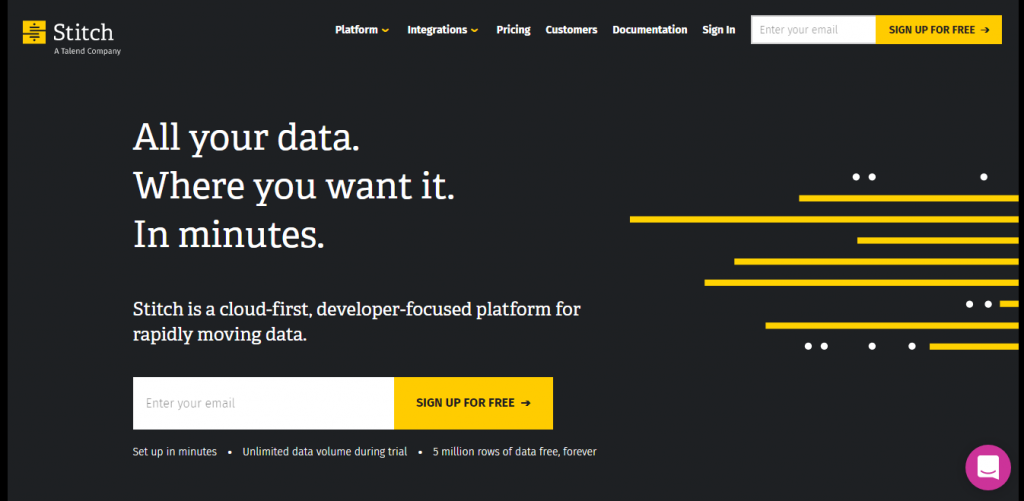
Stitch - use this tool when you need to take data from one source (for example, CRM), and convert/save it to another one (Google BigQuery). If years ago writing scripts on your own was the only way to do so, today you are opened to such ready-made solutions as Stitch. It allows you to add data from over 80 sources to your cloud or local database. No need to write a single line of code, which means you’ve got to save a LOT of your valuable time.
Importance of Webinars for B2B Companies
Webinars are an indispensable part of generating highly targeted sales leads for B2B marketers. According to a Demand Wave Report, webinars are one of the top content types that help to drive revenue for B2B brands. A well-strategized and orchestrated webinar strategy holds the key to diverting more leads on the website through omnichannel marketing.
Audiences not only pay attention to the content of the webinar but have higher expectations about the experiences they have throughout the entire process. Hosting webinars is an excellent way to generate leads when done right.
According to a report by GoToWebinar, 73% of marketers and sales leaders accede to the fact that webinars are the best way to generate high-quality leads. Moreover, a report by curate.com states that 79% of buyers will share information in exchange for webinars.
Additionally, 44% of marketers have either hosted or participated in a webinar and 87% of the participants have found it to be an impactful strategy (Source: weidert.com). Marketers need to be strategic about lead generation which is driven by webinars, otherwise instead of driving engagement, webinars can be a setback to the audiences who are being incorrectly targeted and the content in the webinar is of no use whatsoever to them.
Top Software for Hosting Webinars
It can get really tricky for marketers when it comes to choosing the right software for hosting webinars. Depending upon whether the B2B companies are small, mid, or large scale enterprises, the number of participants can vary from as few as ten to thousands.
Let’s delve into the details about some of the most popular webinar software available in the market and scrutinize their pricing, pros, and cons as enlisted below.
Livestorm
This software has a video-friendly interface that facilitates the creation of several types of videos. Moreover, there are specific tools to suit particular webinar styles and length as follows:
- Live events
- Customer Training
- Online Courses
- Video podcasts
- Product “How-to” demos
- Hiring sessions & many more
Segmenting specific niche based on webinar clusters makes Livestorm a trustworthy webinar hosting tool to bet on.
Pricing
The starting price for this software ranges from $99 per month for 100 attendees to $319 per month for 1,000 participants. The free version of the software allows up to 10 participants to attend a webinar for a duration of not more than 20 minutes.
Key Features
- This is excellent software for hosting corporate webinars in several languages and can be leveraged for cross-training/interactions.
- It can be integrated with several other tools that allow the conversion of webinar data into Excel or .csv format. The pieces of content used in the webinar can further be repurposed to be used for omnichannel marketing.
- The recording storage for the webinars being hosted is unlimited and is created automatically which in turn can serve as tutorials and can be used for future reference.
- It provides an interactive platform for participants, wherein the participants can submit their questions, participate in polls, and even chat with experts and other participants.
- Webinar events come in different forms, namely pre-recorded, recurring, or even live streaming.
Pros
- Ease of Setting Up & Use: The user interface is easily understood by beginners and experts alike.
- Interactive Platform: Emails and other built-in communication features are well developed.
- Eye-Catching Landing Pages: It provides beautiful landing pages which aid in optimizing conversions by compelling participants to sign up.
- Automated Platform: It provides an automated platform for user interaction which is studded with customized tools wherever necessary.
- Freemium: The free plan facilities test-running of the software, with some of the best email tools ever; and the pricing is reasonable and straightforward.
Cons
- Deteriorating recording Quality: The recorded versions have led to poorer sound quality after updates, unlike the originally streamed webinars.
- Lack of Customized Control: The industry experts and people who set-up the meeting might struggle sometimes to gain control over branding and other important activities; specifically when it comes to live streaming or meetings.
- Attendee Support: Bigger companies who want to include more than 1,000 participants at a time will face problems with the software.
- Customer Support is Biased Towards Certain Specific Geographies: The customer support team is prompt and responsive but the majority of them are localized in Europe and this causes problems for users in other geographies across the globe.
Ideal Companies for Livestorm
The software works best for companies who want a fully automated platform for hosting webinars. The landing pages are beautiful and captivating enough to aid the cause of Conversion Rate Optimization (CRO). However, companies that need specifically customized control over branding might not like the software as much.
EverWebinar
EverWebinar aims to make business automation easier for companies and allows them to organize both past and upcoming events in the form of an orchestrated online course. It allows both live and on-demand webinars.
Pricing
The list price for EverWebinar is $597 for a one-time subscription and thereafter the software is free. Moreover, the price is subject to decrease based on promotional offers and the time of year.
Key Features
- The software allows chats throughout the webinar sessions; moreover, the chats can be studded in past webinars as well and other users will be able to see them as incidents which happened in real-time.
- EverWebinar has integrated tools for Email list-building, tracking, and follow-ups as well as for creating and sending automated responses.
- The built-in tracking tools facilitate tracking of advanced metrics such as purchase ratios, user behavioral, and psychographic analyses during the webinars and the Return on Marketing Investment (ROMI).
- The software sends both Email and SMS reminders automatically.
- Branding is allowed irrespective of the form of communication.
Pros
- Excellent Tracking: The tracking is excellent to capture the data of buyers, subscribers, and other vital information related to participants (which can be used for retargeting).
- Ease of Use: The software allows the creation of live webinars which can then be switched to on-demand session modes.
- Sending SMS Messages: Sending SMS messages to participants improves personalization and helps the cause of optimizing User Experience (UX).
- Advance Scheduling: The software allows advance scheduling of webinars, blocking of specific holidays, and even marking the calendars up to the last minute of a session’s participation time.
- Omnipresent Branding: The option of branding is available across all forms of communication.
Cons
- One Time Pricing: Some users might find the one-time payment slightly expensive, but on the flip side of it, they should keep in mind that they can enjoy a lifetime subscription for free once they subscribe and there are amazing discounts being offered time and again.
- No Freemium: The users never get a free-trial to test EverWebinar.
- Customization is Negligible: Some users might feel that EverWebinar provides little scope for customization and is almost completely automated; which is true.
Ideal Companies for EverWebinar
EverWebinar is the one-stop solution for marketers looking to host fully automated webinars. However, the absence of freemium trial, one-time payment for a subscription, and negligible customization can be major turn-offs for some brands.
GoToWebinar
GoToWebinar is one of the most popular and arguably the best webinar software in the market, which is cumulatively owned by LogMeIn and marketed by GoToMeeting software. The brand is well-versed with video communications and supports more subscribers than some of the fiercest counterparts in highly competitive pricing.
Pricing
GoToWebinar offers a seven-day free trial for testing and has the following flexible pricing options as per the needs of the organization:
- The individual plan costs $99 per month and allows 500 participants apart from a single organizer.
- For allowing 3 organizers and 1,000 participants, the software subscription costs $279 per month.
- The Enterprise level package allows 2,000 participants and one organizer to participate simultaneously.
Key Features
- It allows generating reports relating to source tracking, attendees, and events.
- It can be integrated with multiple CRMs and automated marketing tools.
- Events can be recorded and pre-recorded for viewing later.
- It simplifies audiences’ engagement with organizer webcams, pools, and with an analytical dashboard that explains the quality of engagement being generated by the webinars.
- Webinar templates, scheduling, and excellent branding are leveraged while planning and promoting tools.
Pros
- Flexible Branding: The branding is flexible compared to other brands.
- Ease of Use: Professionals at all levels of expertise, find GoToWebinar easy to use.
- Interactive Platform: Participants can interact with the presenters and industry experts by chatting and virtually raising their hands during the webinar sessions.
- Compatible with Multiple Device Platforms: Using GoToWebinar, presenters can stream webinars from anywhere in the world and can participate on their preferred device platform including desktop, mobile, and tablet.
- High-Quality Analytical Tools: The built-in analytical and marketing tools in the software are at par, if not more than some of the best webinar software companies in the business.
Cons
- Frequent Updates: The GoToWebinar team updates their software quite frequently which can be frustrating for the users and might adversely impact the Users' Experience (UX).
- Average recording Quality: The recording quality isn’t one of the best to boast about.
- Outdated Desktop Interface: The desktop interface looks outdated.
- Higher Monthly Fee: Some companies consider the monthly pricing to be very high; although a vast majority of them agree that the pricing is highly competitive and flexible according to the total number of participants involved.
Ideal Companies for GoToWebinar
GoToWebinar is an excellent bet for mid-sized companies craving exemplary brand control.
Zoho Webinars
The brand Zoho is known for its simple, effective, yet affordable products. Zoho Meetings Software developed Zoho Webinars to suffice the needs of smaller companies interested in hosting cheaper webinars. Its modern interface provides an inexpensive option for companies with smaller budgets.
Pricing
The basic plan starts at $15 per month per post and supports 25 participants. The storage capacity is limited to 25 recordings. At the pricing of $31 per host per month, 100 participants can be involved. The freemium plan supports only 5 participants.
Key Features
- The pricing is affordable for all plans, especially for smaller companies.
- The feedback tools including polling and Q&As are inexplicably awesome.
- Sharing via Webcam is available.
- Built-in Analytics is available for tracking and retargeting participants.
- The registration forms can be customized, embedded with, and sent via automated email.
Pros
- Inexpensive & Apt Software for Small Companies: It is one of the most affordable webinar software options for small-scale companies.
- Useful For internal Communication: The tools from Zoho Meeting can be used for internal communication.
- Ease of Use: Whether it be customization of registration forms to conducting polls, everything is extremely easy with the Zoho User Interface (UI).
- Excellent Customer Support: Zoho is well-known for its excellent customer support. Hosts and participants can dial in at any time and from any part of the globe to get their queries answered.
Cons
- Lack of Support for a larger group of Participants: Probably because Zoho Webinars have been designed to match up to the needs of smaller companies, ample support for a larger group of participants is missing.
- Preliminary Analytics: The analytics aren’t as advanced when compared to some of the best in the business.
- Mediocre Automation: Automation is negligible.
Ideal Companies for ZohoWebinars
ZohoWebinars are meant for smaller companies where budget plays a limiting and decisive role in deciding about marketing expenditure. It is a good choice for companies with fewer webinar participants.
ClickMeeting
This software has a pretty simple User Interface (UI), which is easier for the audiences to understand. It allows users to prepare webinar meetings and simultaneously invite guests for the same. It also has a built-in analytical platform for analyzing the interaction and engagement of the audiences through the webinar session. The price of the software is reasonable and it is easily affordable by small and mid-sized businesses.
Pricing
The lowest price package for MyWebinar plan is $22.50 per month for 25 participants. A costlier plan is $165 per month, but allows the involvement of 5,000 participants.
Key Features
- It allows a very powerful webinar rebranding.
- It has a built-in virtual waiting room, with an agenda.
- Paid webinars can be included.
- YouTube, Whiteboards, and Chatting are some of the numerous webinar modes.
- On-demand Webinars, social media sharing, and performance ratings are the additional features included, along with a built-in analytical tool.
Pros
- The pricing is flexible and small, mid, or large scale companies can subscribe as per their budget.
- This is one of the best webinars for handling a relatively large number of participants at a time.
- The user interface is one of the best for the pricing.
- The software is highly customizable with a lot of tools that facilitate branding, customizing forms, and allowing marketing the way marketers would prefer.
Cons
- The platform takes much time to export videos, therefore it’s essential that compression tool can be improved by updating.
- The webinar templates are pretty mundane and not eye-catching, as the other webinar platforms.
Ideal Companies for ClickMeeting
ClickMeeting works quite well for small, medium, and large-scale businesses alike. Depending upon their permissible budget, the marketers can choose from a wide range of options and flexible packages, being offered. A relatively larger size audience can be supported and flexibility of pricing is another added advantage. However, ClickMeeting fails to deliver exemplary webinar templates and can be a setback for marketers obsessed with the design of webinar templates and with beautiful landing pages to engross the attention of prospects.
How Webinars can Add Value to B2B Businesses
Useful in Lead Generation
Webinars are low-cost marketing channels with a high Return on Investment (ROI). Webinars are used to attract niche-specific audiences often from the top of the theoretical sales funnels. The target audiences are then engaged using the content in the webinar. From the signup, to follow-ups, to actual broadcast of the webinar, the target audiences should be well engaged.
The audiences are then tactfully guided lower into their individual sales cycle. Webinars are often designed with a motive to educate the audience and guide them through the sales funnel and further expedite their individual sales cycles.
The metrics used to measure the success of lead generation endeavors include Click-Through Rate (CTR), the total number of leads generated and converted to sales, as well as the total number of registrants vs. the total number of attendees.
For Driving Customer Engagement
Webinars help to transcend customer relationships into partnerships and partnerships to long-term associations. SaaS companies have employed an impactful way to upsell products to B2B marketers.
Customers interested in learning more about the products are asked to connect to upsell or cross-sell other products.
Thus, the longevity of the customers’ buying journeys or their lifetime value (LTV) is enhanced.
Several metrics can be tracked to imply the better engagement of the customers such as Click-Through Rate (CTR), the total number of customers that have registered for the webinar, and the ratio of the total number of registrants to the total number of attendees.
Mastering the execution of Webinars for Direct Sales
Many marketers have successfully mastered the art of using webinars for direct sales by using webinars as the point of sale (POS). Using a webinar as the direct point of sale saves time as it expedites the journey of the prospects through the sales funnel. The webinars are followed by a call-to-action button in the end to compel the prospects to take immediate actions following the webinar such as: pressing the call to actions such as "Subscribe Now", "Get a Free Trial", "Make Payment", etc.
The metrics used to measure the success of webinars as tools for direct sales include Click-Through Rate (CTR), total number of attendees who have signed up to attend the webinar, an increase in the Life Time Value (LTV) of customers, total number of sales expedited through the webinar, replay view rate, ratio of total registrants to attendees for the webinar, etc.
Used for Increasing Digital Footprints & for establishing Brand Equity
Several types of webinars are designed specifically to improve the customer experience and can be downloaded at any point in time, throughout a certain period of time, which is often a year. The webinars can include content related to brand awareness, customer experience, and content meant for lead nurturing.
Pieces of content in the webinars can also be repurposed in the form of slide-shares, can be designed for product demos, and for providing training to the internal sales team. All these practices ensure that the digital footprint of a specific B2B brand is increased and, in the long run, brand equity evolves stronger than before.
Metrics such as Click-Through Rates (CTRs), on-demand views, replay view rate, total number of cumulative downloads per month, and ROI on original content can be used to trace the increasing digital footprint of a brand.
For popularizing brand ideology and vision of the leadership that helps the purpose of Brand Resonance
Webinars, especially on-demand webinars, not only increase the brand equity but also help in popularizing the ideology of the brand. By reflecting on the vision of their brands, the marketers can build stronger relationships with their clients.
Metrics such as Click-Through Rate (CTR), total views, attendees stick rate, total visits, and repeat visits to new webinars reflect on the success rate of execution of webinars, which help the purpose of brand resonance.
To Sum it All Up
While there is no fixed average number of webinars that should essentially be executed by marketers to promote their ideology and build long-term relationships with existing and potential customers, care should be taken that the content in the webinar is relevant to the target audiences. Furthermore, webinars should broadcast at proper intervals.
The topics selected for a webinar, their in-depth description, length of the webinar, influencers, industry experts, guest speakers and presenters, channels used to promote the webinar, the selection of date and time for the live event, and the key points to be highlighted on the registration and landing page, all make a difference to the success of a webinar.
We, at Valasys Media, provide our customers with a variety of lead generation and nurturing services to help them boost their Return on Investment (ROI). For more information about our tailor-made services, to suit your requirements, feel free to contact us.
Webinar tools review was provided by Priya.Priya has about 5 years of experience in Market Research. Currently, she is working for Valasys Media as a content writer, which is one of the top global business consulting companies. They provide their clients with an array of services such as Lead Generation, Database Management, Information Technology - IMS, Account Based Marketing to name a few. She has been preparing several personalized reports for our clients & has done a lot of research on market segmentation, cluster analysis of audiences & inbound methodologies. She has worked with government institutes as well as corporate houses in several projects.
How to Conduct a Webinar
A webinar is no longer a realm of the select few. In today’s world anyone can organize an interesting and professional-looking webinar at a fraction of a cost.
So why are you still hesitating? Continue reading this article and find out how to conduct a webinar that is sure to win over your audience.
Know Your Objectives and Target Audience
What is the goal of your webinar? To answer this question, put yourself in your audience’s shoes and think what benefit they could possibly gain from your event. Here are some common examples:
- Your employees would appreciate learning new skills, getting work updates, and uptraining on new software
- Your prospects and customers expect you to provide thorough product overviews, answer their questions, and avoid blatant sales pitches
- Your partners look for clear objective setting, transparent reporting, and an overall mutually beneficial collaboration
It’s not about what you want – it’s about bringing value to your audience. Otherwise, no one will show up for your webinar.
Determine Your Niche and Outline the Content
You probably already know what you are good at, so that’s a start. To narrow down your webinar topic even further, consider these factors:
- What is popping right now? Look up the trends and see if you have a fresh take on any of them.
- What topic caught your audience’s fancy before? Perhaps you can flesh it out, update the info and make a whole new event out of it.
- What is popular on your competitors’ platforms? We don’t encourage stealing their content: any topic can be presented from a completely different perspective.
Once you determine your niche, you should outline the content. We don’t mean writing a detailed script – that you can do later.
However, sometimes creators go for a topic that is too specific or too broad and is, therefore, not a good fit for an hour-long webinar. A quick outline can help you avoid an issue like that. ‘
A Bonus Tip on Webinar Format
Before or while doing the outline, you should consider what format your webinar will follow. It can be:
- A lecture-like webinar with one speaker and a presentation
- A panel discussion with multiple speakers and a moderator
- An interview with an influencer or a company representative
These are just the most common webinar formats that immediately spring to mind. You can always create your unique format if you think it will be a better fit for your goals.
Choose Webinar Platform and Customize Registration Page
A webinar platform is generally a better solution than a free tool such as Skype or Google Hangouts. Especially now, when almost every platform offers a free trial, round-the-clock tech support and diverse customization options, it’s worth at least trying.
The choice of a webinar platform should depend on several factors:
- How long is your attendee list?
Most webinar companies sets a limit at 2,000 attendees for a relatively small price. If you need more, try MyOwnConference with up to 5,000 participants.
If you don’t have many attendees, you can often get away with a free trial option.
- Are there any customization features?
You want your brand to be recognizable. Is it possible to add your logo to your webinar stream, registration page, and other related content? Can you splash your company colors all over the presentation?
Companies like Template Monster can help you add identity to your webinar. They offer over 1,800 PowerPoint templates and 500 Keynote templates for a unique and slick presentation.
They can customize the slides to reflect your brand identity, and if you don’t have one – Template Monster can design a perfect logo for you.
- Can you track your success?
Do not underestimate the importance of analytics. Many webinars platforms allow you to insert your Google Analytics or Google Tag Manager tags to track your webinar performance. After all, if you don’t know what doesn’t work – how can you improve it?
There are of course many other questions you need to ask yourself before deciding upon a webinar platform. It all depends on your goals, so make sure you know exactly what you want.
Promote Your Webinar and Invite Speakers
The promotional opportunities nowadays are limitless, even when you are strapped for money. Check out some of our ideas:
- Email marketing
Email marketing is still one of the most successful ways of getting people to sing up for your webinar. According to GoToWebinar, 73% of webinar registrations come from email.
If you are looking for professional help with that, look no further than Template Monster.
Template Monster can help you create emails and newsletters with phenomenal open and clickthrough rates. They perform thorough audience segmentation, write engaging and relevant content, and encapsulate it in a beautifully designed format.
- Social networks
Social networks should be your long-term marketing solution, since they allow you to build relationships with your audience on a more personal level.
Clearly, if your target audience goes beyond your company, you should adopt a habit of making regular posts. No spam, just interesting facts, exciting updates, and speaker bios if relevant.
Take pictures of your office area, products, and any other stuff related to your content. Make short videos for even more engagement. Before you know it, you will need to ask your webinar platform for extra seats!
- SEO-optimized posts
High-quality posts in your blog can drive a lot of traffic. To make the posts even more effective, ask Template Monster experts for keyword planning and SEO help.
At this point, you should consider inviting interesting speakers to your webinar. The key word here is “interesting.” Whoever you invite, they should have an energetic and vibrant personality if you don’t want your attendees to fall asleep or, worse, quit your webinar altogether.
Write a Script and Prepare the Slides
Do not leave your speech up to chance. Even if you feel like you are pretty good at impromptu speaking, you cannot predict how you are going to feel on the day of a webinar.
You may be too stressed, tired or simply sick. That is why you need a crutch to lean on – which is going to be your script.
It does not mean that you cannot stray away from the written word. Your script is your compass, not your prison. It’s only natural to make little changes as you speak, however, having a script allows you to keep your focus.
After all, your audience came to learn about a specific topic. Do not defeat their expectations if you don’t want to bother with refund claims in the future.
Once you have your script, you can start working on the slides. The general trajectory here is to leave a lot of white space, do more images and less text, provide illustrative infographics and data sets.
If you are unsure about infographics, ask Template Monster for help. The guys know what they are doing: a well-structured and creative infographic is only one click away.
Deliver a Webinar and Follow-up
Start rehearsing your webinar script at least a week advance. It takes time for new neural pathways to form, so if you don’t want to stutter live, practice in advance.
Check the equipment numerous times and buy back-up tools. You don’t want to end your webinar early just because you got overly excited and smashed your mic against the floor.
Once your webinar is done, do not just leave it all behind. Follow-up with your audience via thank-you and “sign-up for my new event” emails. This is also the best time to suggest buying your products: your audience is more responsive now that you’ve provided value for them.
Conclusion
As you can see, conducting a webinar is not as scary as it may seem at the first sight. With a little bit of planning and a whole lot of passion, you can create an event that will generate you leads for years to come.
Now you are on the right track. Mistakes will be made, since those are an inevitable part of a learning curve. Just accept it and keep going. Practice makes perfect, and the day will come for you to laugh at your past self who was too scared to conduct their first-ever webinar.
Advertising
Ads are how people learn about you and your brand. Make sure you don’t screw up with setting up and running your ad campaigns. Try these 5 tools:
Google AdWords
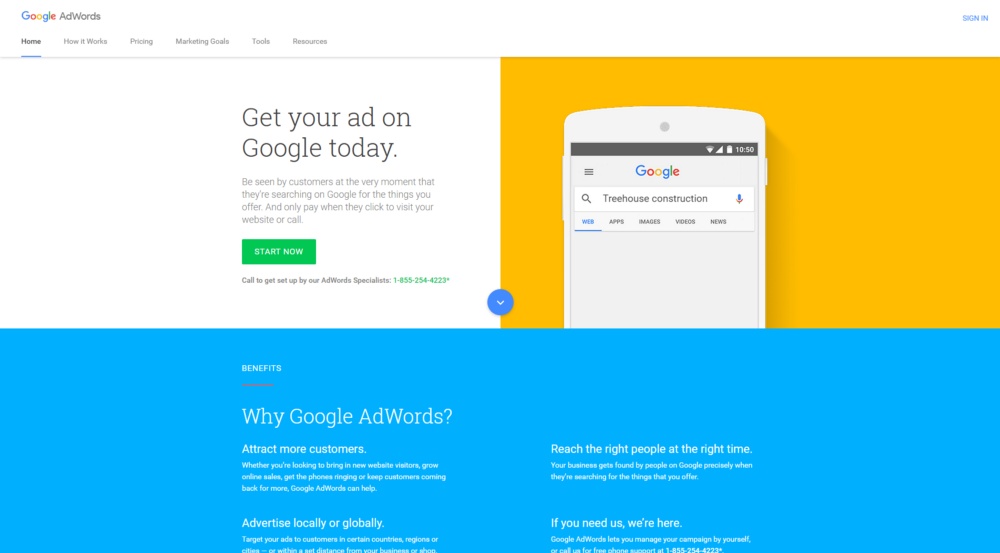
Google AdWords - a well-known contextual advertising service with a convenient and simple interface and a variety of tools to make effective ad campaigns on Google. Basically, your website will be displayed in the first position of Google search results page in the “sponsored links” section, as well as on Google partnering websites. AdWords is very flexible: you can set a budget for a certain period of time, limit your ad display to geographic or time frames, and even change keywords or the ad content.
Google AdWords works with the “pay-per-click” system when companies will only need to pay for every click made by users. This means you pay only for those customers who were interested in your offer.
Adroll
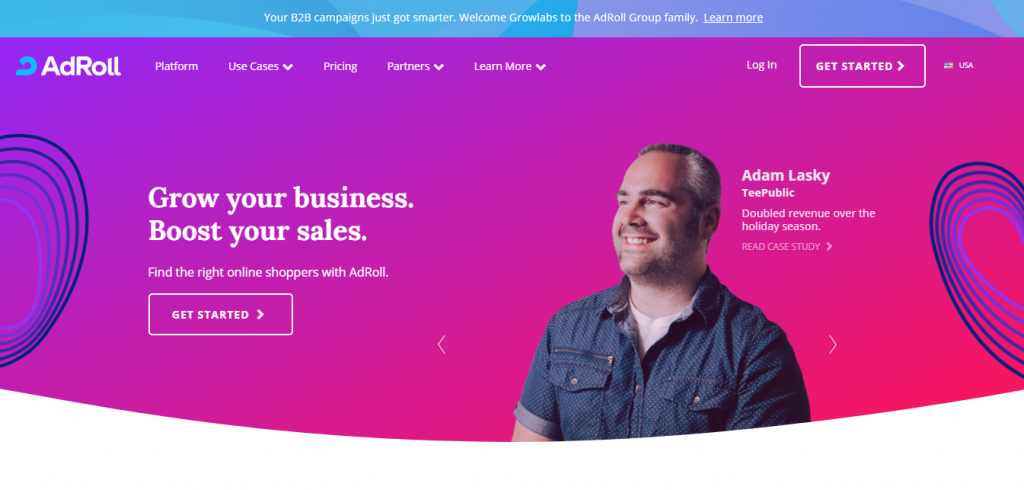
Adroll - this tool is specialized in social media remarketing and is a leader among other similar services. Adroll can redirect your visitors to the website through Twitter or Facebook accounts, as well as other social networks. It is considered extremely helpful in re-engaging customers. By using this tool, you can place and personalize ads so that customers could see previously viewed products. It tracks more than 300 different signals and is able to segment visitors and customers based on the products they viewed. All of that significantly increases the number of sales on the website.
Adespresso Ads
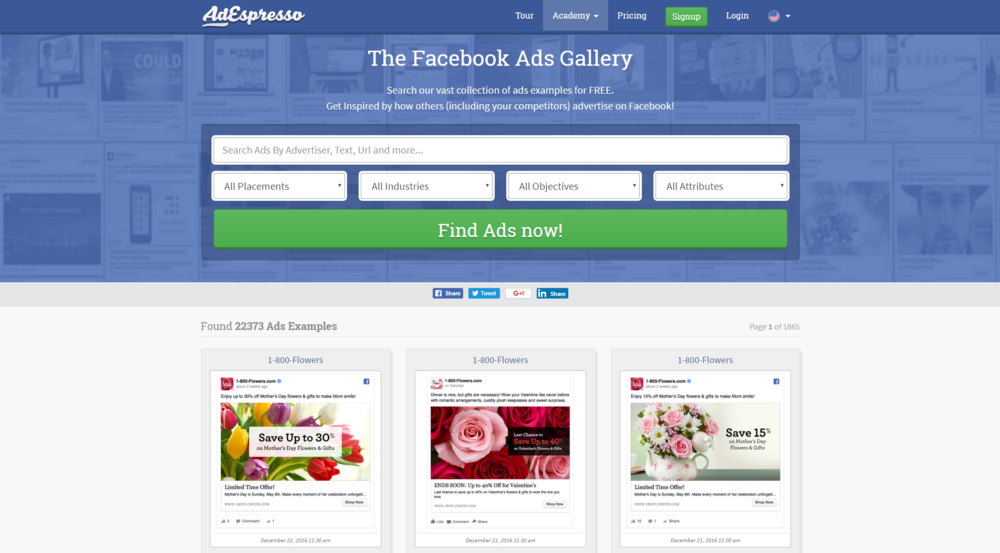
Adespresso Ads - just another cool service to help get inspired by other companies’ ad campaigns. Enter the company’s name in a search tab and it will instantly display all the Facebook ads it was or is currently running.
Promo
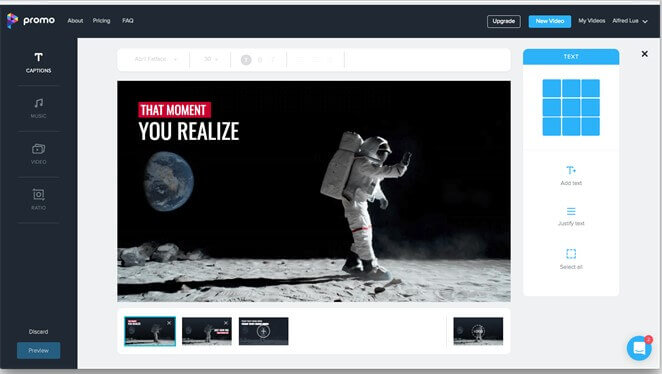
Promo - What about video ads? Creating a single promo video for the entire team can take days, if not weeks. You will need to hire professional video makers and graphic designers to do that, right? But what if you have to make a video on your own real quick? Try Promo - one of the most accessible video editors on the market. With a library of over 2.8 million premium videos and licensed music, Promo can help you create high-quality videos in just a couple of minutes.
Taboola
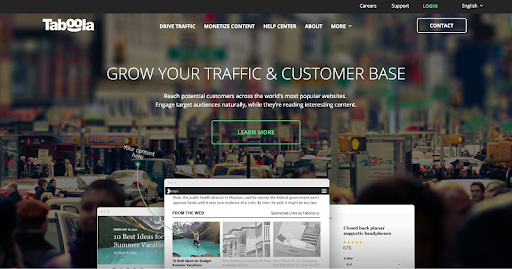
Taboola - native advertising platform - managed to combine plenty of news, articles, blogs, videos, products and other content that users might be interested in. The platform has exclusive access to the top 100 comScore sites such as Business Insider, Bloomberg, The NYT, etc. This is how the platform (particularly, native ads) works:
- A potential client visited your site but left it without committing an action.
- Then he reads articles on other platforms (news, entertainment, business sports) where the company's ads will be posted side by side as related content.
- The user got interested in your ad - he clicked on it.
- The potential client has returned to your site and might make a purchase!
Email Marketing
Establishing two-way communication between any business and a consumer using email marketing these days is still considered efficient, in spite of many doubts. Each customer receives individual emails describing what the company does, what it sells, etc. The cost of such promotion is minimal, and by getting customers’ feedback you can easily estimate their interest or indifference. The tools below should help you prepare a high-quality email marketing campaign:
BuzzStream
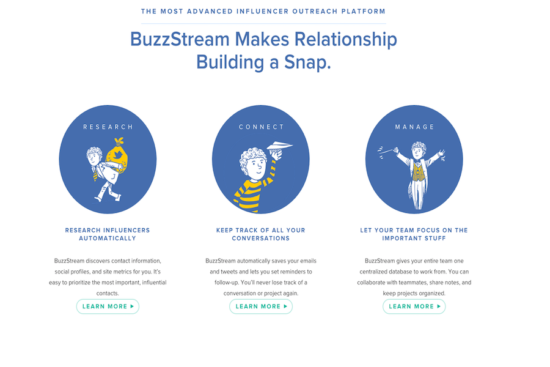
BuzzStream - one of the most popular email outreach resources meant for automating your routine processes as a marketer. In particular, the platform helps find influencers and makes your communication not only easier but even more effective.
BuzzStream allows you to collect the site data (including contact details) and include it in your personal database, as well as save email templates for subsequent contacts. You can also save data from social networks in case of cooperation with media bloggers. Most importantly, there is no need to work with the email services and track letters from there - all the information remains preserved in the BuzzStream user account.
Pitchbox
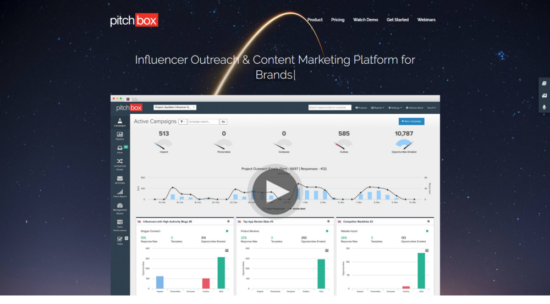
Pitchbox - helps brands to automatically outreach bloggers and influential people in your niche. For companies who cannot afford to invest much in sales and marketing, Pitchbox is a great solution. You will no longer need to hire a team of marketers to build relationships with influencers because the searching and data entry processes are simply automated. Less need for manual labor!
ActiveCampaign

ActiveCampaign - this platform combined email marketing, automation, CRM, and sales altogether to turn one into a handy tool for managing email marketing in one place. ActiveCampaign allows you to segment your contacts based on their actions, location, behavior, and social data. One can provide you with a variety of additional data about contacts by only using their email addresses. The tool works well with many third-party instruments and even lets you send SMS messages to contacts directly from the platform.
ActiveCampaign might be a costly option for startups and new companies. Nonetheless, I still believe it’s worth the offered options, especially if you want to try advanced automated marketing.
Constant Contact

Constant Contact - this is not only one of the largest and fastest growing email marketing services in the world, but also the easiest and most understandable for beginners. Here you can easily manage email lists, templates, etc. Each account gives you the ability to track and compile reports. The other features include the ability to share the results on social media, an image library, and 1 GB of storage for your own files.
Constant Contact offers good Live Chat, and fast email/community support. Here you’ll find an extensive library of useful online training, guidelines, tutorials, etc. Users can get a 60-day free trial (no need to connect a credit card), although after, the prices for the service start at $20/month.
Drip
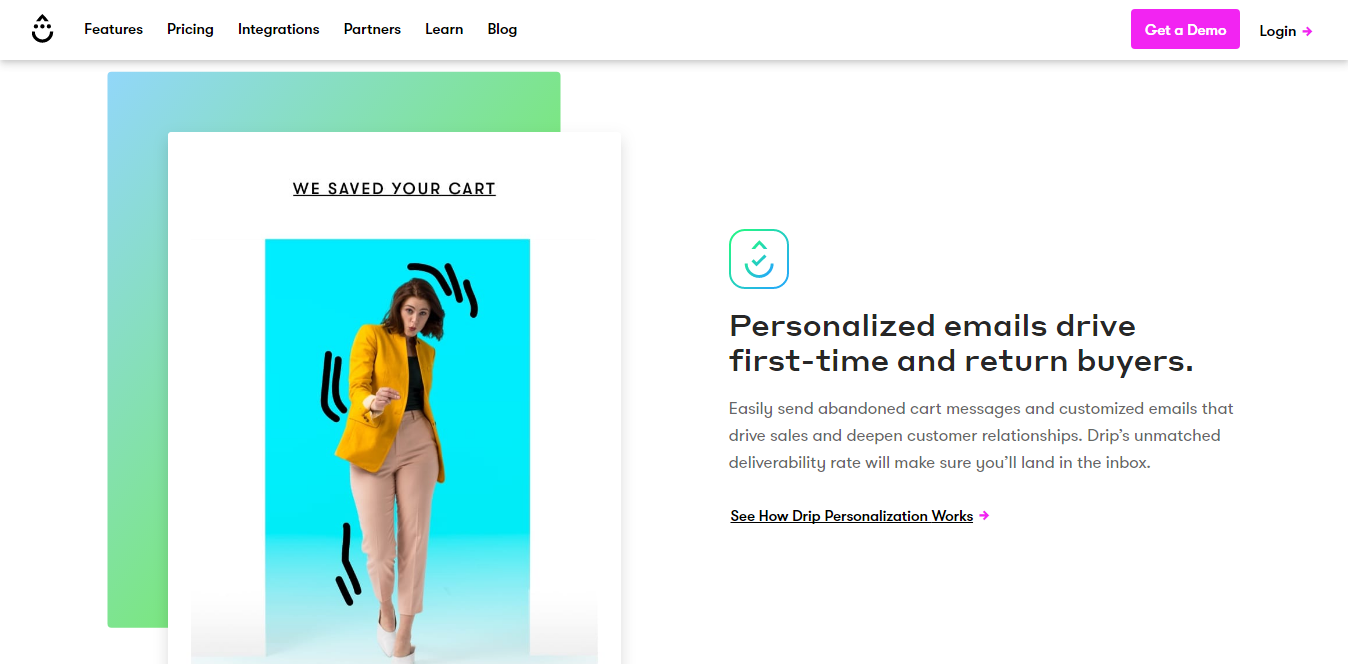
Drip - a powerful email service offering a wide range of email marketing tools convenient for beginners. They provide integration with such popular resources like WooCommerce and WordPress, which makes it easier to add registration forms to your site and gain more potential customers.
What makes Drip a unique platform? It’s the advanced marketing automation tool: smart email segmentation, list groups, and many other features allowing you to reach certain segments in your list of emails. The service offers a free trial account for up to 100 subscribers; aside of that, prices start at $41/month.
ConvertKit
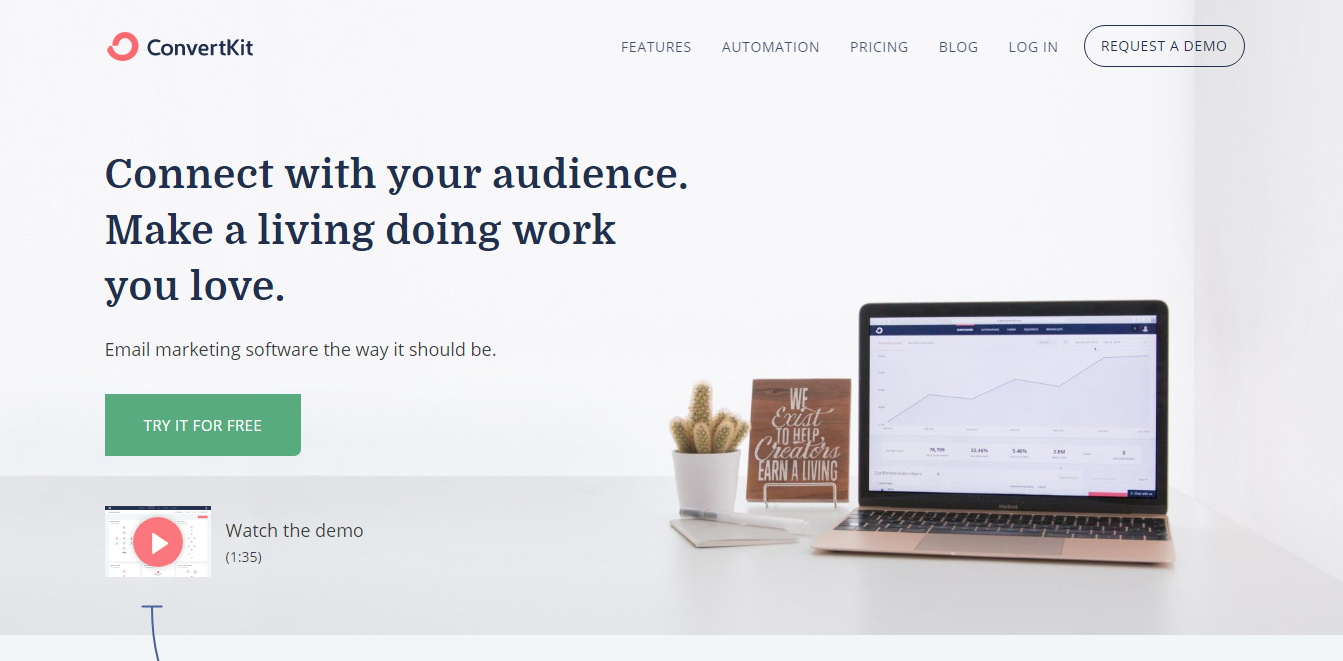
ConvertKit - is a reliable, easy to use, and yet powerful email outreach platform for professional bloggers, authors, and marketers. ConvertKit supports email subscription features using ready-made templates. It also includes the simple management of answering machines. With this tool, you can easily segment your contacts into those who are only interested in a product/service and those who already made a purchase.
ConvertKit offers great email support and has an extensive knowledge base with excellent learning materials. The pricing starts at $29 per month with the possibility of a refund within 30 days.
AWeber

AWeber - offers a wide range of tools for both small and medium businesses. Getting started with AWeber is super simple because it easily connects to most platforms, including WordPress. You get access to a variety of ready-made email templates, list management, autoresponders, and an email tracking tool with detailed analytics. It offers a 30-day free trial followed by a subscription that starts at $19/month.
GetResponse
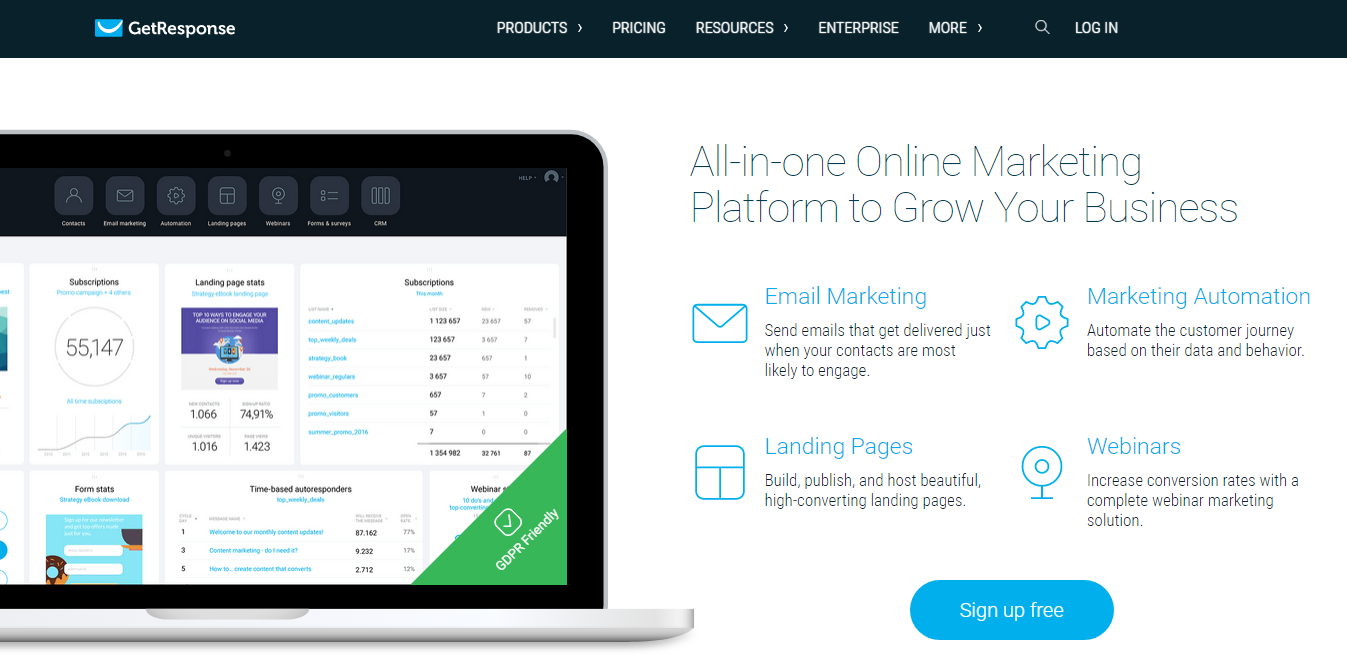
GetResponse - what differs GetResponse from the rest? I’d say it offers some interesting additional features, such as a landing page builder and a platform for making webinars, which is initially synchronized with your contacts. The GetResponse help section is full of free educational materials including videos, webinars, instructions, guides, etc. The service offers a 30-day free trial and then prices start at $15/month.
MailChimp
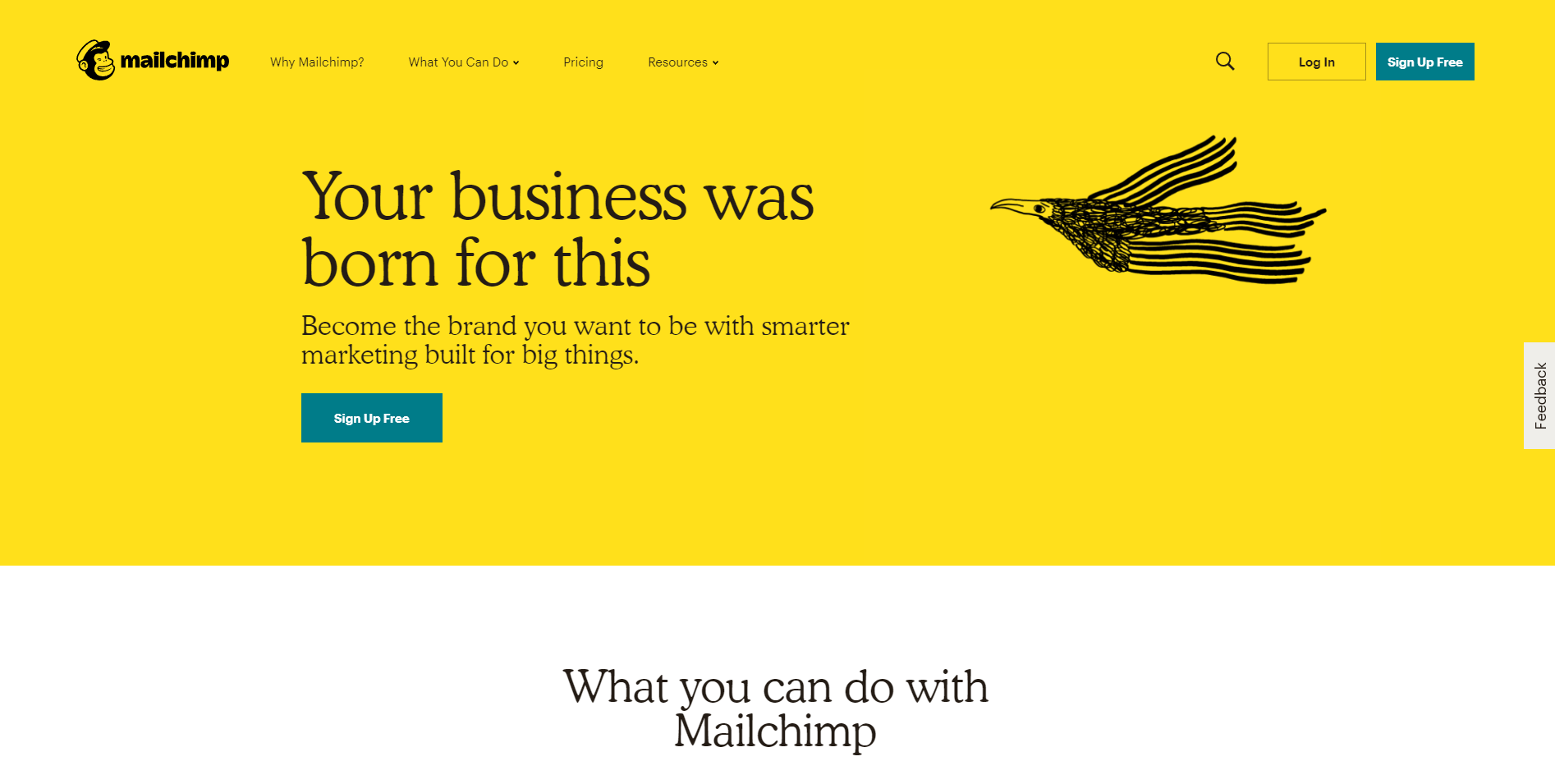
MailChimp - this is perhaps the most popular email marketing service in the world and not for vain. MailChimp provides a very easy-to-use interface with great tools and amazing support. Provides perfect integration with WordPress, Magento, and many other CMS platforms.
MailChimp offers different customizable email templates, voicemail, contacts segmentation into groups, simple tracking instruments, and analytics. It also allows you to customize the time your email will be delivered based on time zones and user geolocation. A free subscription lets you send 12,000 emails to 2000 users. Meanwhile, the least expensive paid plan will cost you $10/month.
Autopilot

Autopilot - another email outreach service allowing you to set up automatic chain letters and integrate them with mobile phone messages or messengers.
Additional Tools
Yes, as a digital marketer, you will barely need to work with graphic design software or tools that fit none of the above-mentioned categories. But if you learn to use a few simple instruments below, it will help you to easily visualize ideas on your own and complete projects much faster.
Canva
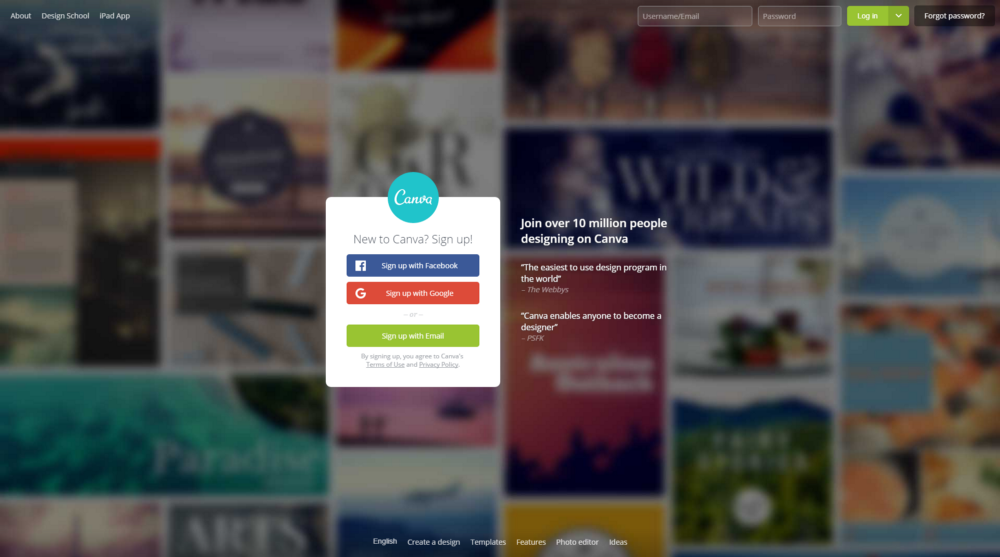
Canva - use Canva if you need to create outstanding visuals for website ads quickly. The tool offers hundreds of design options, from various ad templates to diverse typography options, etc.
Flatpack
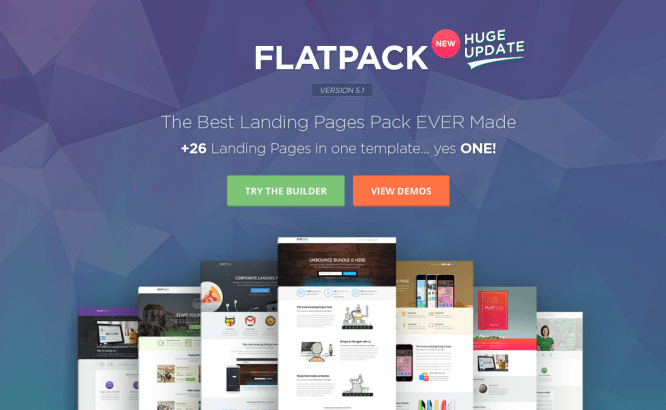
Flatpack - this one will help you develop a landing page template. Similar to Canva, the tool is designed for non-professionals who need a simple quick design solution for their website. That’s why Flatpack lacks any complicated pro instruments that regular users will not handle.
Unsplash
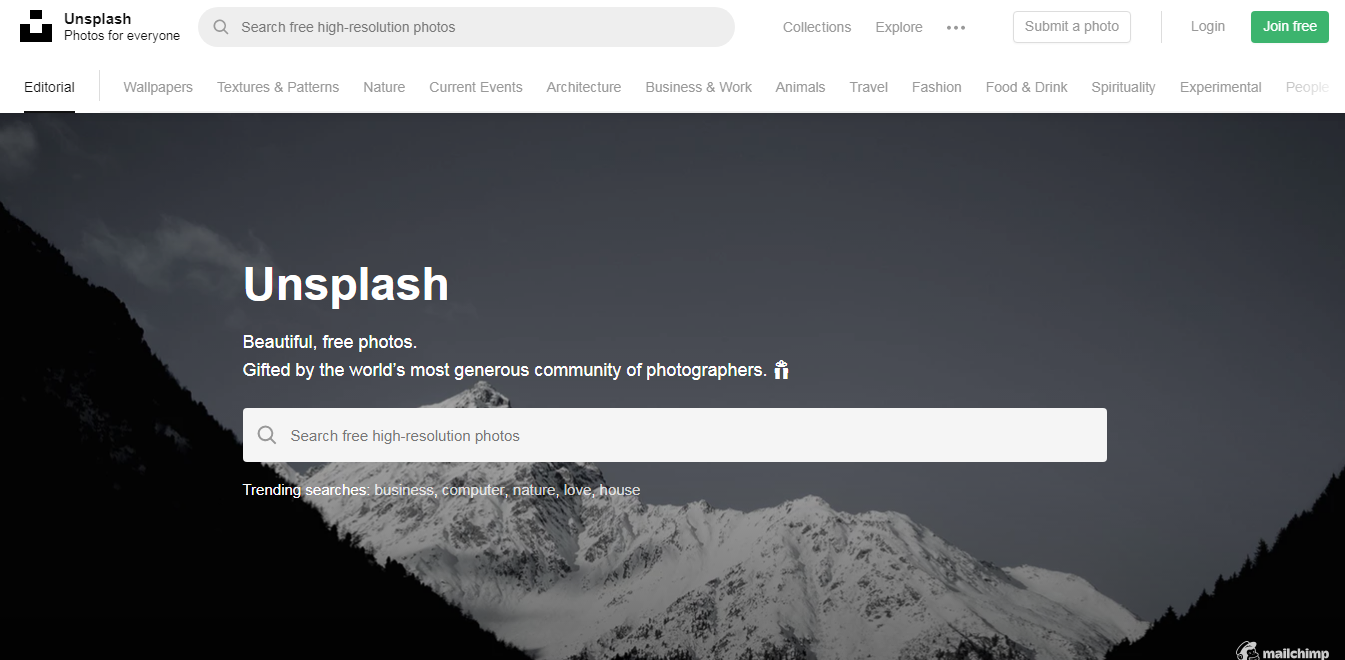
Unsplash - out of hundreds of other stock photo providers, I chose Unsplash as my favorite one for a number of reasons. First, it offers TONS of high-quality photos for free, which means you don’t necessarily have to pay to get a cool image for the landing page, blog article, ad or an email newsletter. Second, all free images are available to any user without the necessity of a sign up. Obviously, the paid images collection will offer a much wider choice of professional photos on various topics. The decision to pay or not is up to you. All I know, the quality is always great and worth paying for.
FreeLogoDesign
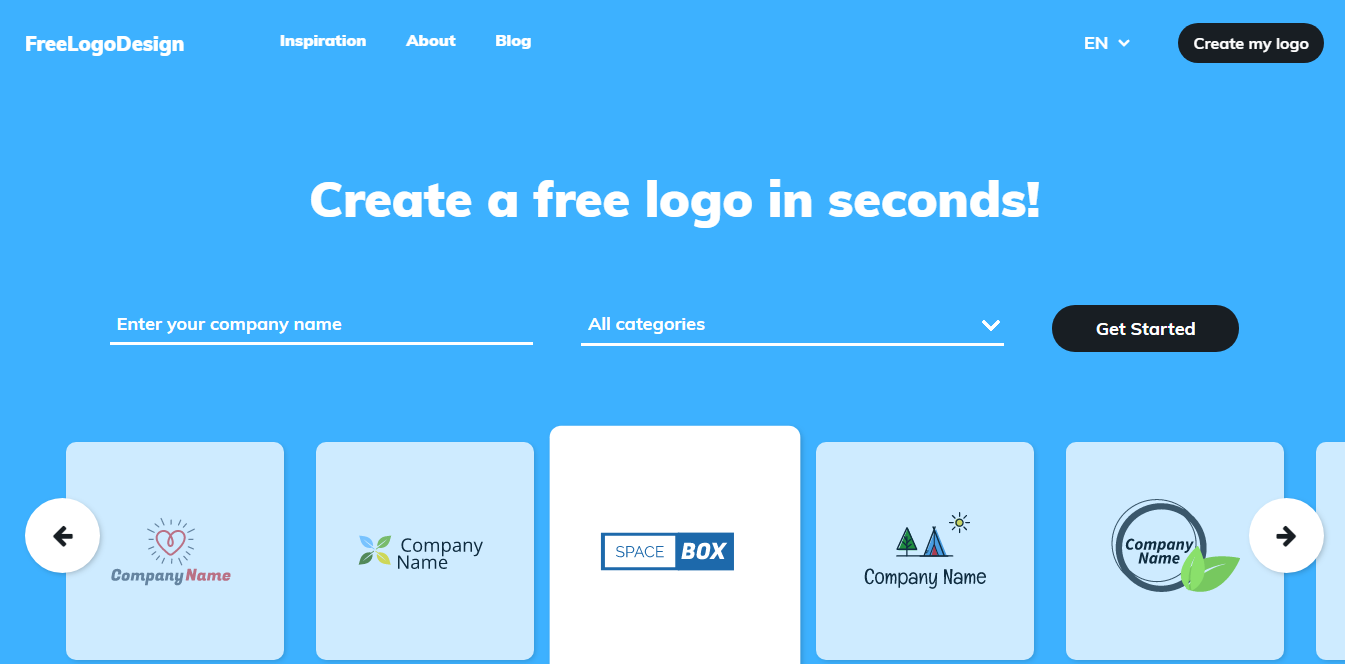
FreeLogoDesign - although creating logos stands far from the list of regular responsibilities of a digital marketer, be ready for some emergency situations when you’ll need to create a logo design ASAP. Obviously, in this case, you’d prefer some easy-to-use and free platforms like FreeLogoDesign. Simply enter your company name, select an industry and the tool will offer you various logo templates. Or you can start developing your own design from scratch.
Behance
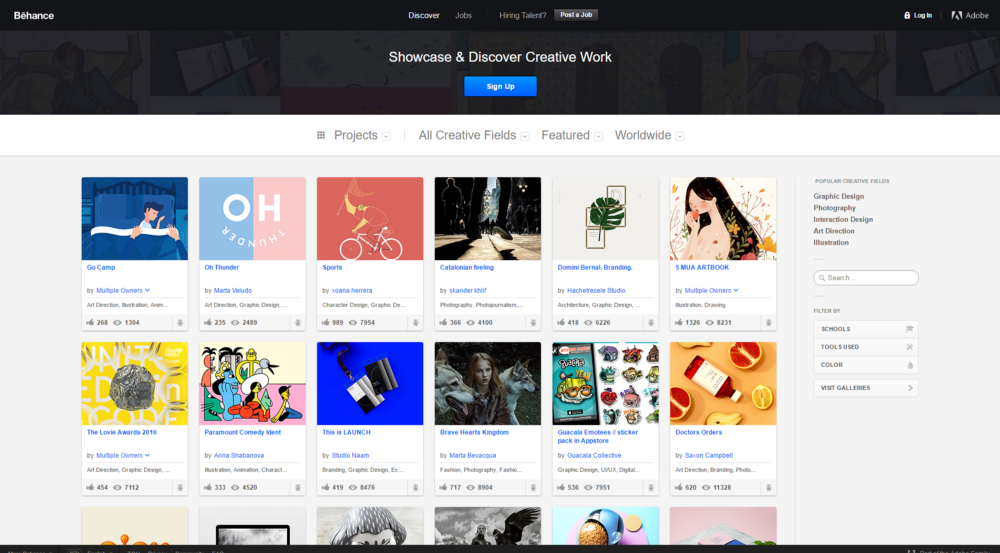
Behance - this service is well-known to graphic designers for being the largest designer portfolio hub in the world. It makes a great place to get inspired by others and not just in web-design but also architecture, typography, motion-graphics, or anything else related to web design these days.
Marvelapp
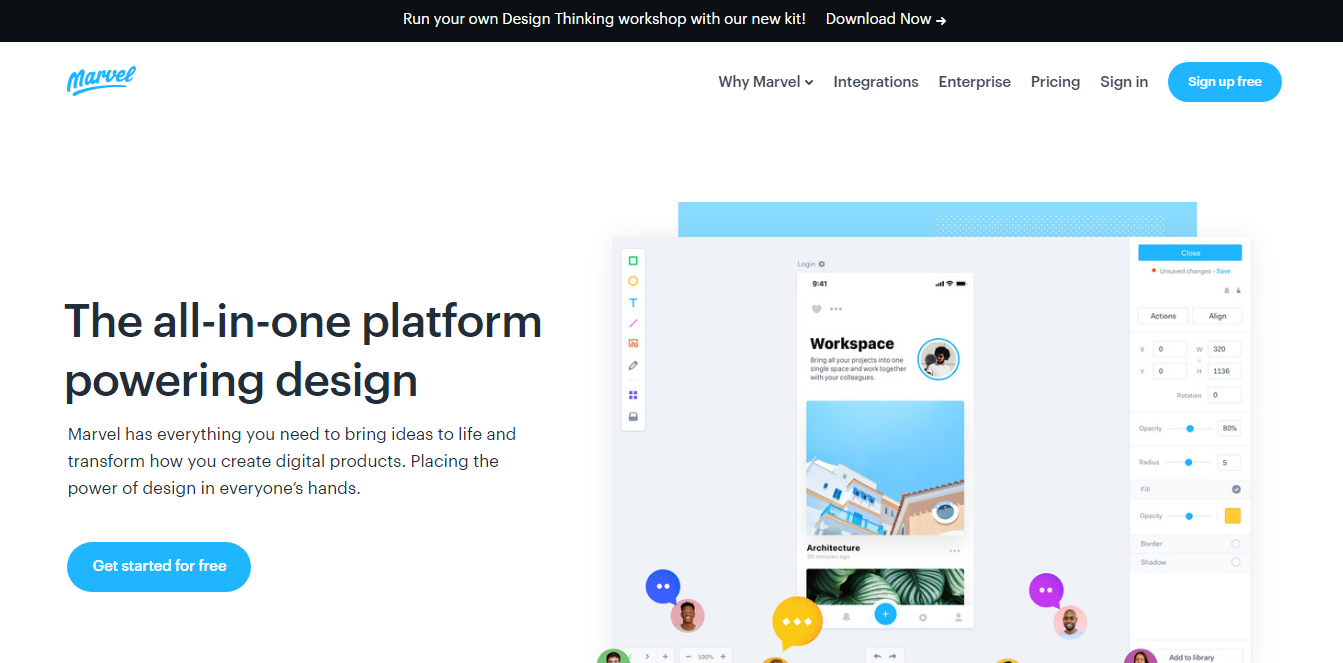
Marvelapp - this instrument is great for prototyping and collaborating on apps and website layouts. It is integrated with the most popular tools used by graphic designers and has many interesting features to make your life easier. The good news is, the tool is free.
Slack

Slack – although considered a controversial tool these days, I would still include it in my list. From my personal experience, Slack is super convenient for team chatting and sending a lot of emails at once. Nonetheless, some people believe this corporate messenger ruins productivity because team members will always end up chatting about things unrelated to work. Whichever side you are on is up to you, but I am certainly a Slack lover!
Evernote
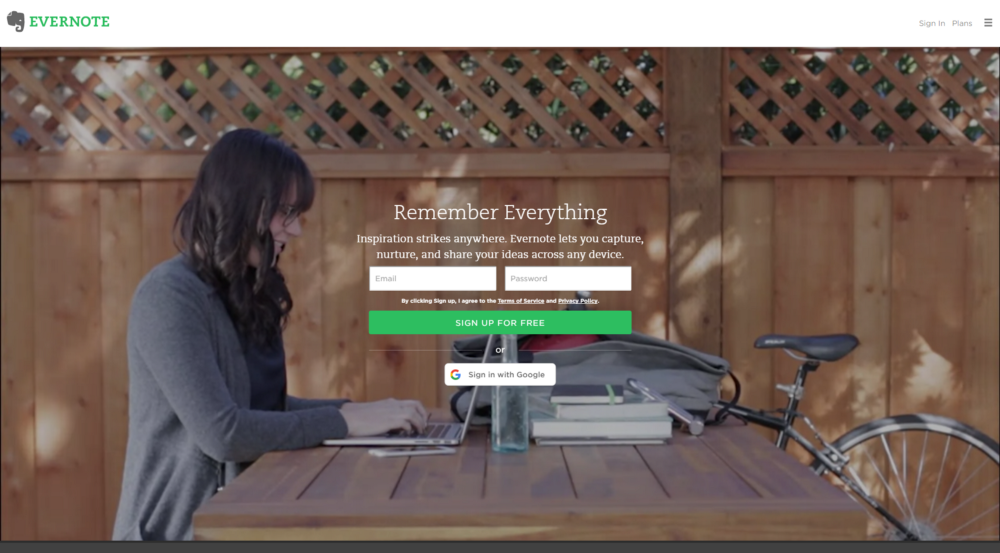
Evernote - carrying a heavy notebook everywhere might not be as convenient as having a great app for storing notes and ideas on your electronic device. Evernote is synchronized on all gadgets so that you can always come back to your writings everywhere. You can also share your notes with other people and work on them together. Other useful features are the ability to scan docs, attach PDFs and images, and save important emails.
TimeDoctor
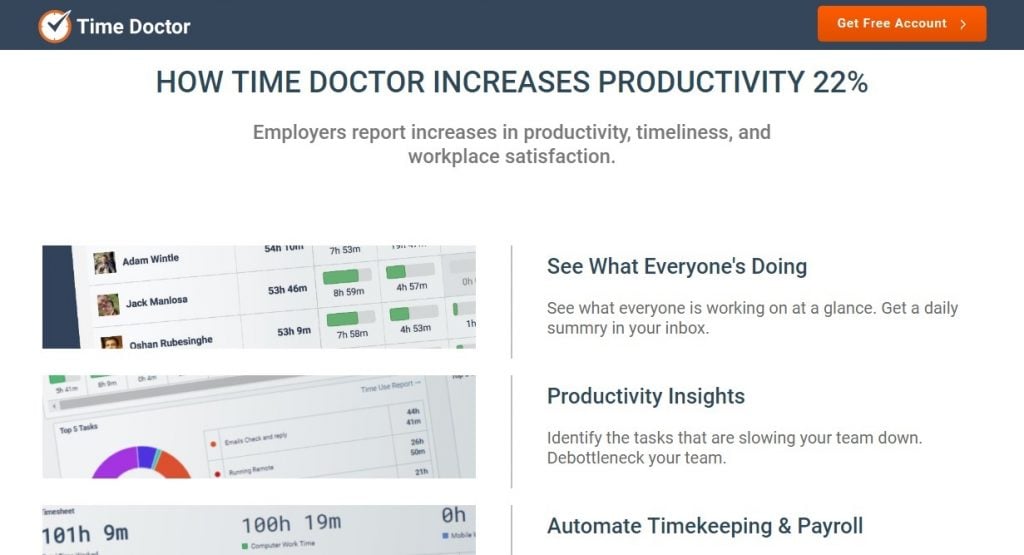
TimeDoctor - a powerful time tracking software focused on productivity and managing daily tasks. The service will help you improve your time management skills in project management and increase productivity. It is a great tool for tracking the work time of each employee. The web service will help you get rid of the habit to visit unrelated websites and apps that always distract people from their work.
Todoist
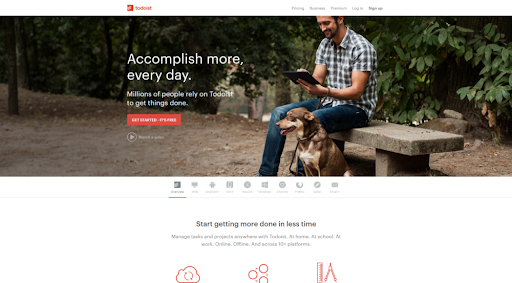
Todoist - I’ve tried a bunch of apps and services to organize my daily tasks, most of them connected to work, and Todoist is by far my favorite and most convenient tool to manage my projects. The first thing that made me fall in love with this planner is that it’s super clean. You can highlight different projects in different colors, arrange them in a drag-and-drop manner, and create delegate tasks using “child projects” option. Finally, you can collaborate on projects with other Todoist users and work on them together.
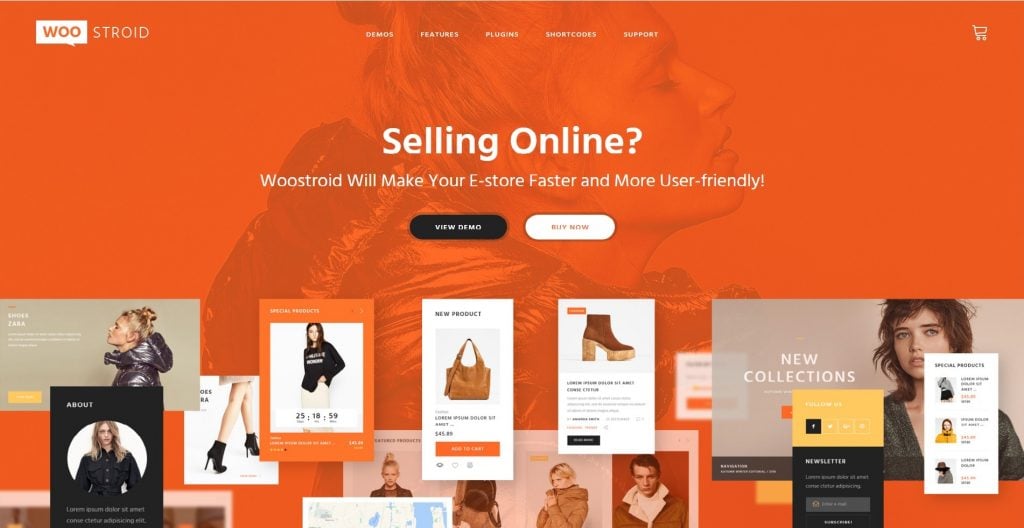
End of the Line …
Now that you have finally read it all through, I hope you get an opportunity to use at least several out of the 55 digital marketing tools in 2019. Many of these services are not new but still remain demanded and useful on the market due to constant updated and improved features.
In case you have your own favorite picks I have not mentioned in this list, go ahead and share them with me and everyone else in the comment section!
To all digital marketers, we wish you a productive year...and enough sleep 🙂
Read Also
6 Significant Digital Marketing Trends of 2019
Psychology of Color in Digital Marketing
5+ Must-Have Marketing Tools for Small Business
Get more to your email
Subscribe to our newsletter and access exclusive content and offers available only to MonsterPost subscribers.


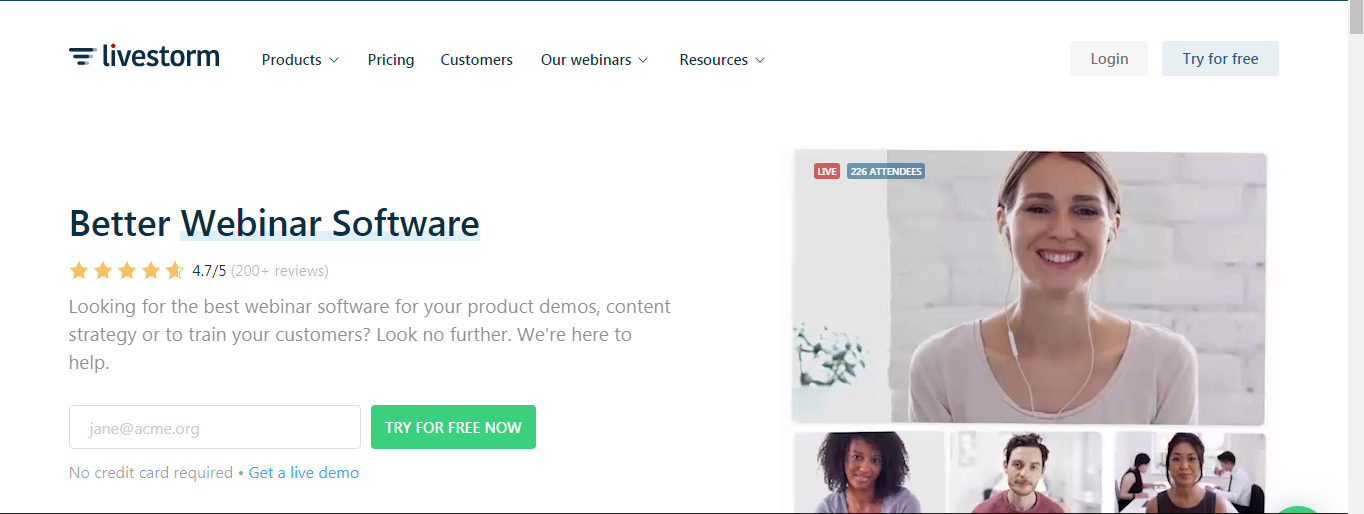
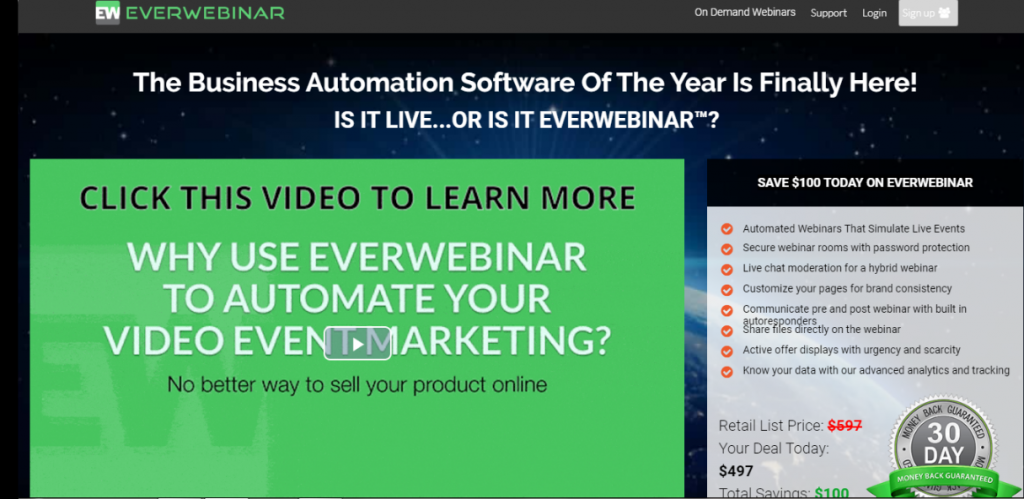

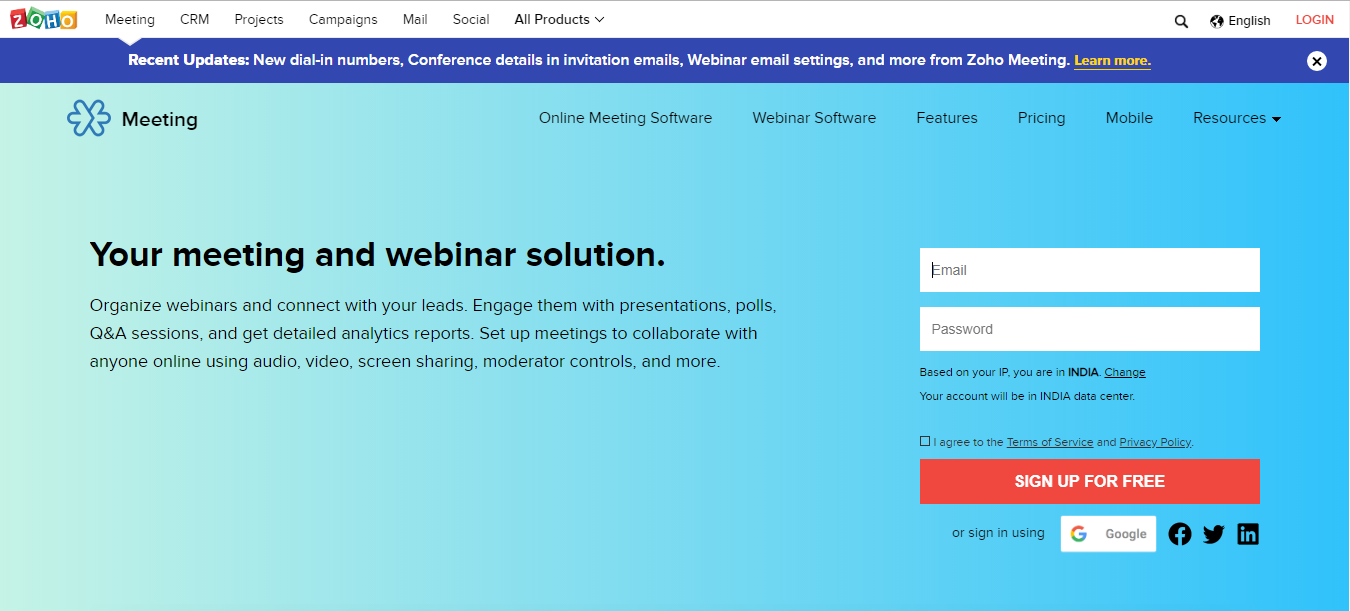
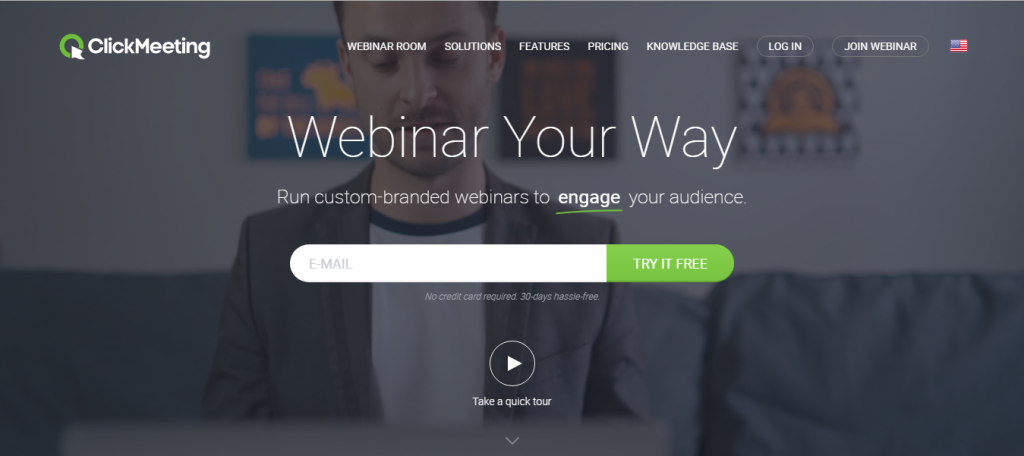
Leave a Reply
You must be logged in to post a comment.